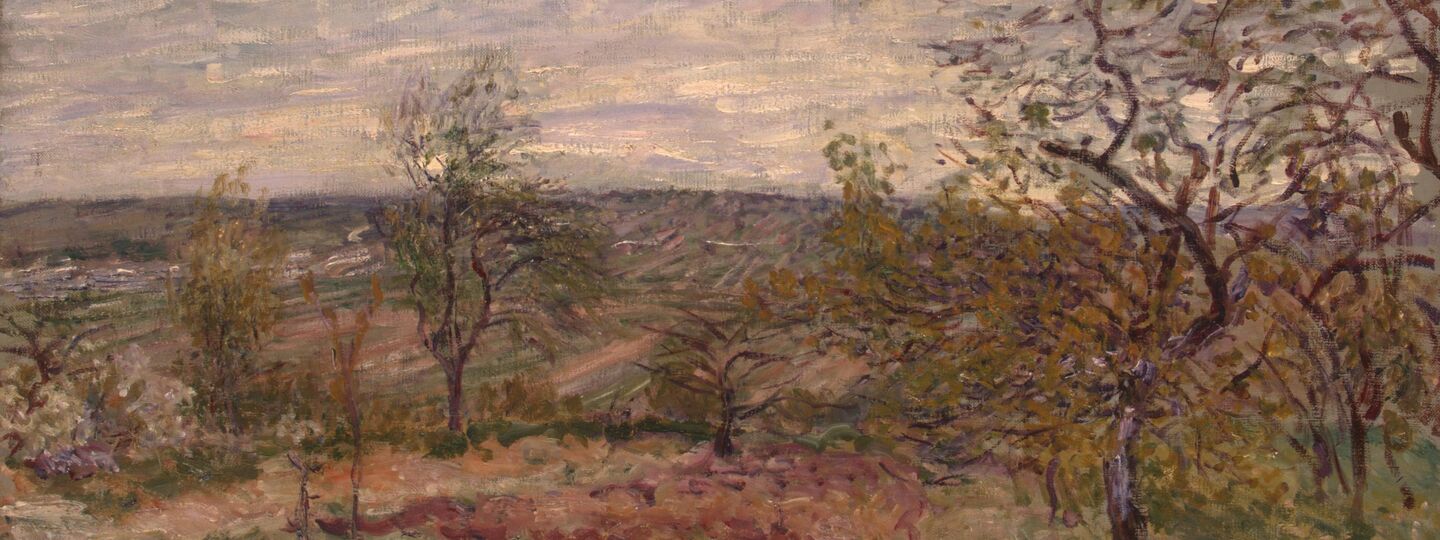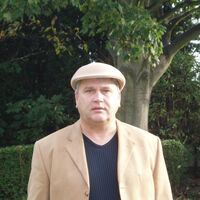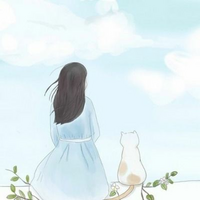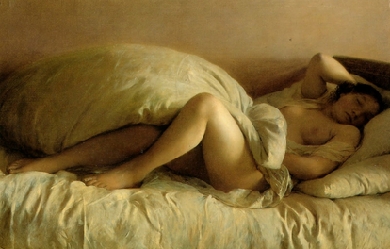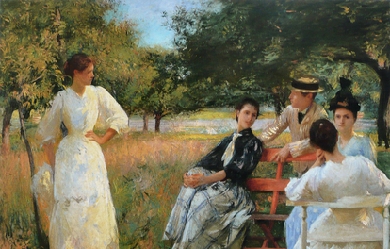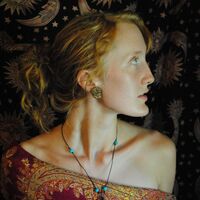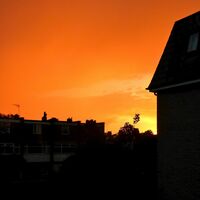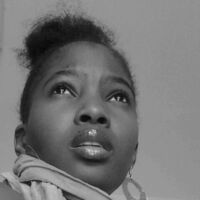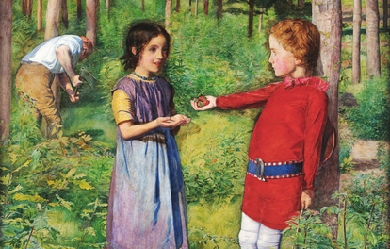
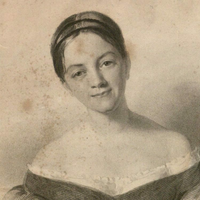
Letitia Elizabeth Landon (14 August 1802– 15 October 1838), English poet and novelist, better known by her initials L. E. L. Born in Chelsea, London to John Landon and Catherine Jane Bishop. A precocious child, Landon learned to read as a toddler. Her reputation, while high in the 19th century, fell during most of the 20th as literary fashions changed and Landon’s poetry was perceived as overly simple and sentimental. In recent years, however, scholars and critics have increasingly studied her work, beginning with Germaine Greer in the 1970s.
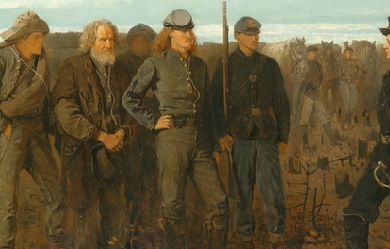
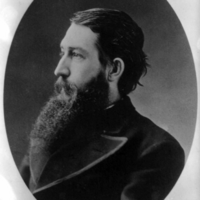
Sidney Clopton Lanier (February 3, 1842– September 7, 1881) was an American musician, poet and author. He served in the Confederate army, worked on a blockade running ship for which he was imprisoned (resulting in his catching tuberculosis), taught, worked at a hotel where he gave musical performances, was a church organist, and worked as a lawyer. As a poet he used dialects. He became a flautist and sold poems to publications. He eventually became a university professor and is known for his adaptation of musical meter to poetry. Many schools, other structures and two lakes are named for him. Biography Sidney Clopton Lanier was born February 3, 1842, in Macon, Georgia, to parents Robert Sampson Lanier and Mary Jane Anderson; he was mostly of English ancestry. His distant French Huguenot ancestors immigrated to England in the 16th century, fleeing religious persecution. He began playing the flute at an early age, and his love of that musical instrument continued throughout his life. He attended Oglethorpe University, which at the time was near Milledgeville, Georgia, and he was a member of the Sigma Alpha Epsilon fraternity. He graduated first in his class shortly before the outbreak of the American Civil War. He fought in the American Civil War (1861–65), primarily in the tidewater region of Virginia, where he served in the Confederate signal corps. Later, he and his brother Clifford served as pilots aboard English blockade runners. On one of these voyages, his ship was boarded. Refusing to take the advice of the British officers on board to don one of their uniforms and pretend to be one of them, he was captured. He was incarcerated in a military prison at Point Lookout in Maryland, where he contracted tuberculosis (generally known as “consumption” at the time). He suffered greatly from this disease, then incurable and usually fatal, for the rest of his life. Shortly after the war, he taught school briefly, then moved to Montgomery, Alabama, where he worked as a desk clerk at The Exchange Hotel and also performed as a musician. He was the regular organist at The First Presbyterian Church in nearby Prattville. He wrote his only novel, Tiger Lilies (1867) while in Alabama. This novel was partly autobiographical, describing a stay in 1860 at his grandfather’s Montvale Springs resort hotel near Knoxville, Tennessee. In 1867, he moved to Prattville, at that time a small town just north of Montgomery, where he taught and served as principal of a school. He married Mary Day of Macon in 1867 and moved back to his hometown, where he began working in his father’s law office. After taking and passing the Georgia bar, Lanier practiced as a lawyer for several years. During this period he wrote a number of poems, using the “cracker” and “negro” dialects of his day, about poor white and black farmers in the Reconstruction South. He traveled extensively through southern and eastern portions of the United States in search of a cure for his tuberculosis. While on one such journey in Texas, he rediscovered his native and untutored talent for the flute and decided to travel to the northeast in hopes of finding employment as a musician in an orchestra. Unable to find work in New York City, Philadelphia, or Boston, he signed on to play flute for the Peabody Orchestra in Baltimore, Maryland, shortly after its organization. He taught himself musical notation and quickly rose to the position of first flautist. He was famous in his day for his performances of a personal composition for the flute called “Black Birds”, which mimics the song of that species. In an effort to support Mary and their three sons, he also wrote poetry for magazines. His most famous poems were “Corn” (1875), “The Symphony” (1875), “Centennial Meditation” (1876), “The Song of the Chattahoochee” (1877), “The Marshes of Glynn”, (1878) and “Sunrise” (1881). The latter two poems are generally considered his greatest works. They are part of an unfinished set of lyrical nature poems known as the “Hymns of the Marshes”, which describe the vast, open salt marshes of Glynn County on the coast of Georgia. (The longest bridge in Georgia is in Glynn County and is named for Lanier.) Later life Late in his life, he became a student, lecturer, and, finally, a faculty member at the Johns Hopkins University in Baltimore, specializing in the works of the English novelists, Shakespeare, the Elizabethan sonneteers, Chaucer, and the Old English poets. He published a series of lectures entitled The English Novel (published posthumously in 1883) and a book entitled The Science of English Verse (1880), in which he developed a novel theory exploring the connections between musical notation and meter in poetry. Lanier finally succumbed to complications caused by his tuberculosis on September 7, 1881, while convalescing with his family near Lynn, North Carolina. He was 39. Lanier is buried in Green Mount Cemetery in Baltimore. Writing style and literary theory With his theory connecting musical notation with poetic meter, and also being described as a deft metrical technical, in his own words ‘daring with his poem ’Special Pleading’ to give myself such freedom as I desired, in my own style’ and also by developing a unique style of poetry written in logaoedic dactyls, which was strongly influenced by the works of his beloved Anglo-Saxon poets. He wrote several of his greatest poems in this meter, including “Revenge of Hamish” (1878), “The Marshes of Glynn” and “Sunrise”. In Lanier’s hands, the logaoedic dactylic meter led to a free-form, almost prose-like style of poetry that was greatly admired by Henry Wadsworth Longfellow, Bayard Taylor, Charlotte Cushman, and other leading poets and critics of the day. A similar poetical meter was independently developed by Gerard Manley Hopkins at about the same time (there is no evidence that they knew each other or that either of them had read any of the other’s works). Lanier also published essays on other literary and musical topics and a notable series of four redactions of literary works about knightly combat and chivalry in modernized language more appealing to the boys of his day: The Boy’s Froissart (1878), a retelling of Jean Froissart’s Froissart’s Chronicles, which tell of adventure, battle and custom in medieval England, France and Spain The Boy’s King Arthur (1880), based on Sir Thomas Malory’s compilation of the legends of King Arthur and the Knights of the Round Table The Boy’s Mabinogion (1881), based on the early Welsh legends of King Arthur, as retold in the Red Book of Hergest. The Boy’s Percy (published posthumously in 1882), consisting of old ballads of war, adventure and love based on Bishop Thomas Percy’s Reliques of Ancient English Poetry. He also wrote two travelogues that were widely read at the time, entitled Florida: Its Scenery, Climate and History (1875) and Sketches of India (1876) (although he never visited India). Legacy and honors The Sidney Lanier Cottage in Macon, Georgia is listed on the National Register of Historic Places. The square, stone Monument to Poets of Georgia, located between 7th & 8th St. in Augusta, lists Lanier as one of Georgia’s four great poets, all of whom saw Confederate service. The southeastern side bears this inscription: "To Sidney Lanier 1842–1880. The catholic man who hath nightly won God out of knowledge and good out of infinite pain and sight out of Blindness and Purity out of stain." The other poets on the monument are James Ryder Randall, Fr. Abram Ryan, and Paul Hayne. Baltimore honored Lanier with a large and elaborate bronze and granite sculptural monument, created by Hans K. Schuler and located on the campus of the Johns Hopkins University. In addition to the monument at Johns Hopkins, Lanier was also later memorialized on the campus of Duke University in Durham, North Carolina. Upon the construction of the iconic Duke Chapel between 1930 and 1935 on the university’s West Campus, a statue of Lanier was included alongside two fellow prominent Southerners, Thomas Jefferson and Robert E. Lee. This statue, which appears to show a Lanier older than the 39 years he actually lived, is situated on the right side of the portico leading into the Chapel narthex. It is prominently featured on the cover of the 2010 autobiographical memoir Hannah’s Child, by Stanley Hauerwas, a Methodist theologian teaching at Duke Divinity School. Lanier’s poem “The Marshes of Glynn” is the inspiration for a cantata by the same name that was created by the modern English composer Andrew Downes to celebrate the Royal Opening of the Adrian Boult Hall in Birmingham, England, in 1986. Piers Anthony used Lanier, his life, and his poetry in his science-fiction novel Macroscope (1969). He quotes from “The Marshes of Glynn” and other references appear throughout the novel. Several entities have been named for Sidney Lanier: Inhabited places Lanier Heights Neighborhood, Washington, D.C. Lanier County, Georgia Indirectly, USS Lanier, which was named for the county. Bodies of water Lake Lanier, operated by the U.S. Army Corps of Engineers northeast of Atlanta, Georgia (The lake was created by the damming of the Chattahoochee River, a river that was the subject of one of Lanier’s poems.) Lake Lanier in Tryon, North Carolina Schools Sidney Lanier High School in Montgomery, Alabama Sidney Lanier School in Gainesville, Florida Lanier University short-lived university, first Baptist, then owned by the Ku Klux Klan, in Atlanta, Georgia The Sidney Lanier Building (previously Sidney Lanier Elementary School) on the campus of Glynn Academy, in Brunswick, Georgia Lanier Middle School in Buford, Georgia Lanier Elementary School in Gainesville, Georgia Sidney Lanier Elementary School in Tulsa, Oklahoma Sidney Lanier High School in Austin, Texas Sidney Lanier Expressive Arts Vanguard Elementary School in Dallas, Texas Lanier Middle School in Houston, Texas Lanier High School in San Antonio, Texas Lanier Middle School in Fairfax, Virginia Sidney Lanier Elementary School in Tampa, Florida Lanier Technical College in Oakwood, Georgia Other Sidney Lanier Cottage, the birthplace of Lanier, in Macon, Georgia Sidney Lanier Bridge over the South Brunswick River in Brunswick, Georgia Lanier’s Oak in Brunswick, Georgia The Lanier Library, Tryon, North Carolina. Lanier’s widow, Mary, donated two of his volumes of poetry to begin the collection when the library was established in 1890. Sidney Lanier Camp, Eliot, Maine. Sidney Lanier Boulevard in Duluth, GA References Wikipedia—https://en.wikipedia.org/wiki/Sidney_Lanier

I love poetry. I write poetry based on my experience in life and love and the songs I listen to. I first started writing for school, but I'm literally addicted to poetry now. It's my escape. I have been through so many things in my life I should not have had to go through, especially since I'm only 14. But it all comes out in my poetry. I love watching crime shows like Criminal Minds and NCIS. I'm obsessed with TV news reports about such things as crime, train derailments, car accidents, and fires. It's just the way I am. They say music, especially rock music, takes away your pain, whether it be physical, emotional, spiritual, or mental. I learned it's not true. It just makes it better temporarily, but then makes it worse.
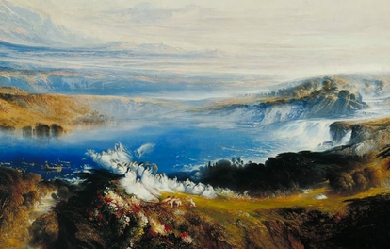
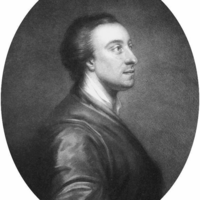
Mark Akenside (9 November 1721– 23 June 1770) was an English poet and physician. Biography Akenside was born at Newcastle upon Tyne, England, the son of a butcher. He was slightly lame all his life from a wound he received as a child from his father’s cleaver. All his relations were Dissenters, and, after attending the Royal Free Grammar School of Newcastle, and a dissenting academy in the town, he was sent in 1739 to the University of Edinburgh to study theology with a view to becoming a minister, his expenses being paid from a special fund set aside by the dissenting community for the education of their pastors. He had already contributed The Virtuoso, in imitation of Spenser’s style and stanza (1737) to the Gentleman’s Magazine, and in 1738 A British Philippic, occasioned by the Insults of the Spaniards, and the present Preparations for War (also published separately). After one winter as a theology student, Akenside changed to medicine as his field of study. He repaid the money that had been advanced for his theological studies, and became a deist. His politics, said Dr. Samuel Johnson, were characterized by an “impetuous eagerness to subvert and confound, with very little care what shall be established,” and he is caricatured in the republican doctor of Tobias Smollett’s The Adventures of Peregrine Pickle. He was elected a member of the Medical Society of Edinburgh in 1740. His ambitions already lay outside his profession, and his gifts as a speaker made him hope one day to enter Parliament. In 1740, he printed his Ode on the Winter Solstice in a small volume of poems. In 1741, he left Edinburgh for Newcastle and began to call himself surgeon, though it is doubtful whether he practised, and from the next year dates his lifelong friendship with Jeremiah Dyson (1722–1776). During a visit to Morpeth in 1738, Akenside had the idea for his didactic poem, The Pleasures of the Imagination, which was well received and later desecribed as 'of great beauty in its richness of description and language’, and was also subsequently translated into more than one foreign language. He had already acquired a considerable literary reputation when he came to London about the end of 1743 and offered the work to Robert Dodsley for £120. Dodsley thought the price exorbitant, and only accepted the terms after submitting the manuscript to Alexander Pope, who assured him that this was “no everyday writer”. The three books of this poem appeared in January 1744. His aim, Akenside tells us in the preface, was “not so much to give formal precepts, or enter into the way of direct argumentation, as, by exhibiting the most engaging prospects of nature, to enlarge and harmonize the imagination, and by that means insensibly dispose the minds of men to a similar taste and habit of thinking in religion, morals and civil life”. His powers fell short of this ambition; his imagination was not brilliant enough to surmount the difficulties inherent in a poem dealing so largely with abstractions; but the work was well received. Thomas Gray wrote to Thomas Warton that it was “above the middling”, but “often obscure and unintelligible and too much infected with the Hutchinson jargon”. William Warburton took offence at a note added by Akenside to the passage in the third book dealing with ridicule. Accordingly he attacked the author of the Pleasures of the Imagination—which was published anonymously—in a scathing preface to his Remarks on Several Occasional Reflections, in answer to Dr Middleton... (1744). This was answered, nominally by Dyson, in An Epistle to the Rev. Mr Warburton, in which Akenside probably had a hand. It was in the press when he left England in 1744 to secure a medical degree at Leiden. In little more than a month he had completed the necessary dissertation, De ortu et incremento foetus humani, and received his diploma. Returning to England Akenside unsuccessfully attempted to establish a practice in Northampton. In 1744, he published his Epistle to Curio, attacking William Pulteney (afterwards Earl of Bath) for having abandoned his liberal principles to become a supporter of the government, and in the next year he produced a small volume of Odes on Several Subjects, in the preface to which he lays claim to correctness and a careful study of the best models. His friend Dyson had meanwhile left the bar, and had become, by purchase, clerk to the House of Commons. Akenside had come to London and was trying to make a practice at Hampstead. Dyson took a house there, and did all he could to further his friend’s interest in the neighbourhood. But Akenside’s arrogance and pedantry frustrated these efforts, and Dyson then took a house for him in Bloomsbury Square, making him independent of his profession by an allowance stated to have been £300 a year, but probably greater, for it is asserted that this income enabled him to “keep a chariot”, and to live “incomparably well”. In 1746 he wrote his much-praised “Hymn to the Naiads”, and he also became a contributor to Dodsley’s Museum, or Literary and Historical Register. He was now twenty-five years old, and began to devote himself almost exclusively to his profession. He was elected a Fellow of the Royal Society in 1753. He was an acute and learned physician. He was admitted M.D. at the University of Cambridge in 1753, fellow of the Royal College of Physicians in 1754, and fourth censor in 1755. In June 1755 he read the Gulstonian lectures before the College, in September 1756 the Croonian Lectures, and in 1759 the Harveian Oration. In January 1759 he was appointed assistant physician, and two months later principal physician to Christ’s Hospital, but he was charged with harsh treatment of the poorer patients, and his unsympathetic character prevented the success to which his undeniable learning and ability entitled him. At the accession of George III both Dyson and Akenside changed their political opinions, and Akenside’s conversion to Tory principles was rewarded by the appointment of physician to the queen. Dyson became secretary to the treasury, lord of the treasury, and in 1774 privy councillor and cofferer to the household. Akenside died at his house in Burlington Street, where he had lived from 1762. His friendship with Dyson puts his character in the most amiable light. Writing to his friend so early as 1744, Akenside said that the intimacy had “the force of an additional conscience, of a new principle of religion”, and there seems to have been no break in their affection. He left all his effects and his literary remains to Dyson, who issued an edition of his poems in 1772. This included the revised version of the Pleasures of Imagination, on which the author was engaged at his death. Akenside’s verse was better when it was subjected to more severe metrical rules. His odes are rarely lyrical in the strict sense, but they are dignified and often musical. By 1911 his works were little read. Edmund Gosse described him as “a sort of frozen Keats”. Works * The best edition of Akenside’s Poetical Works is that prepared (1834) by Alexander Dyce for the Aldine Edition of the British Poets, and reprinted with small additions in subsequent issues of the series. See Dyce’s Life of Akenside prefixed to his edition, also Johnson’s Lives of the Poets, and the Life, Writings and Genius of Akenside (1832) by Charles Bucke. * The authoritative edition of Akenside’s Poetical Works is that prepared by Robin Dix (1996). An important earlier edition was prepared by Alexander Dyce (1834) for the Aldine Edition of the British Poets, and reprinted with small additions in subsequent issues of the series. See Dyce’s Life of Akenside prefixed to his edition, also Johnson’s Lives of the Poets, and the Life, Writings and Genius of Akenside (1832) by Charles Bucke. References and sources * References * Sources * This article incorporates text from a publication now in the public domain: Chisholm, Hugh, ed. (1911). “Akenside, Mark”. Encyclopædia Britannica (11th ed.). Cambridge University Press. Editnotes: External links * Works by Mark Akenside at Project Gutenberg * Works by or about Mark Akenside at Internet Archive * Works by Mark Akenside at LibriVox (public domain audiobooks) * Index entry for Mark Akenside at Poets’ Corner * Akenside’s The pleasures of imagination: a poem, in three books, New York, 1795. * Mark Akenside at University of Toronto Libraries References Wikipedia—https://en.wikipedia.org/wiki/Mark_Akenside

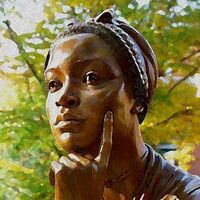
Phillis Wheatley was the first black poet in America to publish a book. She was born around 1753 in West Africa and brought to New England in 1761, where John Wheatley of Boston purchased her as a gift for his wife. Although they brought her into the household as a slave, the Wheatleys took a great interest in Phillis's education. Many biographers have pointed to her precocity; Wheatley learned to read and write English by the age of nine, and she became familiar with Latin, Greek, the Bible, and selected classics at an early age. She began writing poetry at thirteen, modeling her work on the English poets of the time, particularly John Milton, Thomas Gray, and Alexander Pope. Her poem "On the Death of the Rev. Mr. George Whitefield" was published as a broadside in cities such as Boston, New York, and Philadelphia and garnered Wheatley national acclaim. This poem was also printed in London. Over the next few years, she would print a number of broadsides elegizing prominent English and colonial leaders. Wheatley's doctor suggested that a sea voyage might improve her delicate health, so in 1771 she accompanied Nathaniel Wheatley on a trip to London. She was well received in London and wrote to a friend of the "unexpected and unmerited civility and complaisance with which I was treated by all." In 1773, thirty-nine of her poems were published in London as Poems on Various Subjects, Religious and Moral. The book includes many elegies as well as poems on Christian themes; it also includes poems dealing with race, such as the often-anthologized "On Being Brought from Africa to America." She returned to America in 1773. After Mr. and Mrs. Wheatley died, Phillis was left to support herself as a seamstress and poet. It is unclear precisely when Wheatley was freed from slavery, although scholars suggest it occurred between 1774 and 1778. In 1776, Wheatley wrote a letter and poem in support of George Washington; he replied with an invitation to visit him in Cambridge, stating that he would be "happy to see a person so favored by the muses." In 1778, she married John Peters, who kept a grocery store. They had three children together, all of whom died young. Because of the war and the poor economy, Wheatley experienced difficulty publishing her poems. She solicited subscribers for a new volume that would include thirty-three new poems and thirteen letters, but was unable to raise the funds. Phillis Wheatley, who had once been internationally celebrated, died alone in a boarding house in 1784. She was thirty-one years old. Many of the poems for her proposed second volume disappeared and have never been recovered.
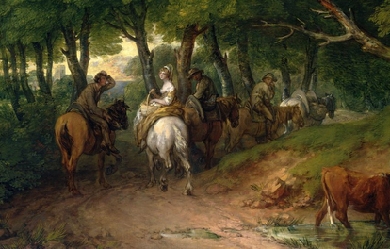

Helen Maria Williams (17 June 1759– 15 December 1827) was a British novelist, poet, and translator of French-language works. A religious dissenter, she was a supporter of abolitionism and of the ideals of the French Revolution; she was imprisoned in Paris during the Reign of Terror, but nonetheless spent much of the rest of her life in France. A controversial figure in her own time, the young Williams was favourably portrayed in a 1787 poem by William Wordsworth, but (especially at the height of the French Revolution) she was portrayed by other writers as irresponsibly politically radical and even as sexually wanton. Life She was born on 17 June 1759 in London to a Scottish mother, Helen Hay, and a Welsh army officer father, Charles Williams. Her father died when she was eight; the remnant of the family moved to Berwick-upon-Tweed, where she had what she herself would describe in the preface to a 1786 book of poems as “a confined education”. In 1781 she moved to London and met Andrew Kippis, who would have great influence on her literary career and political views and brought her into contact with the leading London intellectuals of her time. Her 1786 Poems touch on topics ranging from religion to a critique of Spanish colonial practices. She allied herself with the cult of feminine sensibility, deploying it politically in opposition to war ("Ode on the Peace", a 1786 poem about Peru) and slavery (the abolitionist “Poem on the Bill Lately Passed for Regulating the Slave Trade”, 1788). In the context of the Revolution Controversy, she came down on the side of the revolutionaries in her 1790 novel Julia and defied convention by travelling alone to revolutionary France, where she was hosted by Mme. Du Fossé, who had earlier, in London, given her lessons in French. Her letters from France marked a turn from being primarily a writer of poetry to one of prose. She enthusiastically attended the Fête de la Fédération on the anniversary of the storming of the Bastille and returning briefly to London in 1791 was a staunch, though not completely uncritical, defender of the Revolution. Returning to France in July 1791, she published a poem “A Farewell for two Years to England”; in fact she briefly visited England again in 1792, but only to persuade her mother and her sisters, Cecilia and Persis, to join her in France just as the country was moving toward the more violent phases of its revolution. After the September Massacres of 1792, she allied herself with the Girondists; as a saloniere, she also hosted Mary Wollstonecraft, Francisco de Miranda and Thomas Paine. After the violent downfall of the Gironde and the rise of the Reign of Terror, she and her family were thrown into the Luxembourg prison where she was allowed to continue working on translations of French-language works into English, including what would prove to be a popular translation of Bernardin St. Pierre’s novel Paul et Virginie, to which she appended her own prison sonnets. Upon her release, she travelled with John Hurford Stone to Switzerland. She was harshly criticised for this since Stone, separated from an unfaithful wife, was still legally a married man; the subsequent history of Williams and Stone’s relationship only tended to confirm the rumours. Nonetheless, her few poems from this period continue to express Dissenting piety and were published in volumes with those of other religiously like-minded poets. In 1798, she published A Tour in Switzerland, which included an account of her travels, political commentary, and the poem “A Hymn Written Amongst the Alps”. Williams’ 1801 Sketches of the State of Manners and Opinions in the French Republic showed a continued attachment to the original ideals of the French Revolution but a growing disenchantment with the rise of Napoleon; as emperor, he would declare her ode “The Peace signed between the French and the English” (also known as the “Ode on the Peace of Amiens”) to be treasonable to France. Nonetheless, he proved to be, in this respect, more lenient than the revolutionary government had been to this now-famous international literary figure: she spent a single day in prison and continued to live and write in Paris. After the Bourbon Restoration, she became a naturalised French citizen in 1818; nonetheless, in 1819 she moved to Amsterdam to live with a nephew she had helped raise. However, she was unhappy in Amsterdam and soon returned to Paris, where, until her death in 1827, she continued to be an important interpreter of French intellectual currents for the English-speaking world.

I used to be broken, broken enough to stop caring about everything and everyone. Poetry was and is the only thing that gets me through half of my feelings. Read them, enjoy, judge, I don't care. These are some wounds, some mine, some made up, but still can be felt, displayed on this pages. Read them, bandage them or rip off the scab and give another fresh cut. It's your choice.
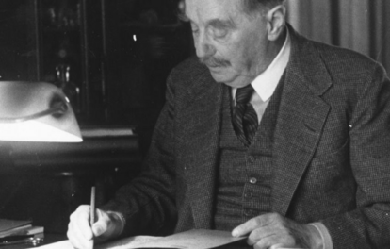

Herbert George Wells (21 September 1866 – 13 August 1946) was an English writer. He was prolific in many genres, writing dozens of novels, short stories, and works of social commentary, history, satire, biography, and autobiography, and even including two books on recreational war games. He is now best remembered for his science fiction novels and is often called the “father of science fiction”, along with Jules Verne and Hugo Gernsback.During his own lifetime, however, he was most prominent as a forward-looking, even prophetic social critic who devoted his literary talents to the development of a progressive vision on a global scale. A futurist, he wrote a number of utopian works and foresaw the advent of aircraft, tanks, space travel, nuclear weapons, satellite television and something resembling the World Wide Web. His science fiction imagined time travel, alien invasion, invisibility, and biological engineering. Brian Aldiss referred to Wells as the “Shakespeare of science fiction”. Wells rendered his works convincing by instilling commonplace detail alongside a single extraordinary assumption – dubbed “Wells’s law” – leading Joseph Conrad to hail him in 1898 as “O Realist of the Fantastic!”. His most notable science fiction works include The Time Machine (1895), The Island of Doctor Moreau (1896), The Invisible Man (1897), The War of the Worlds (1898) and the military science fiction The War in the Air (1907). Wells was nominated for the Nobel Prize in Literature four times.Wells’s earliest specialised training was in biology, and his thinking on ethical matters took place in a specifically and fundamentally Darwinian context. He was also from an early date an outspoken socialist, often (but not always, as at the beginning of the First World War) sympathising with pacifist views. His later works became increasingly political and didactic, and he wrote little science fiction, while he sometimes indicated on official documents that his profession was that of journalist. Novels such as Kipps and The History of Mr Polly, which describe lower-middle-class life, led to the suggestion that he was a worthy successor to Charles Dickens, but Wells described a range of social strata and even attempted, in Tono-Bungay (1909), a diagnosis of English society as a whole. Wells was a diabetic and co-founded the charity The Diabetic Association (known today as Diabetes UK) in 1934. Life Early life Herbert George Wells was born at Atlas House, 162 High Street in Bromley, Kent, on 21 September 1866. Called “Bertie” in the family, he was the fourth and last child of Joseph Wells (a former domestic gardener, and at the time a shopkeeper and professional cricketer) and his wife, Sarah Neal (a former domestic servant). An inheritance had allowed the family to acquire a shop in which they sold china and sporting goods, although it failed to prosper: the stock was old and worn out, and the location was poor. Joseph Wells managed to earn a meagre income, but little of it came from the shop and he received an unsteady amount of money from playing professional cricket for the Kent county team. Payment for skilled bowlers and batsmen came from voluntary donations afterwards, or from small payments from the clubs where matches were played. A defining incident of young Wells’s life was an accident in 1874 that left him bedridden with a broken leg. To pass the time he began to read books from the local library, brought to him by his father. He soon became devoted to the other worlds and lives to which books gave him access; they also stimulated his desire to write. Later that year he entered Thomas Morley’s Commercial Academy, a private school founded in 1849, following the bankruptcy of Morley’s earlier school. The teaching was erratic, the curriculum mostly focused, Wells later said, on producing copperplate handwriting and doing the sort of sums useful to tradesmen. Wells continued at Morley’s Academy until 1880. In 1877, his father, Joseph Wells, suffered a fractured thigh. The accident effectively put an end to Joseph’s career as a cricketer, and his subsequent earnings as a shopkeeper were not enough to compensate for the loss of the primary source of family income. No longer able to support themselves financially, the family instead sought to place their sons as apprentices in various occupations. From 1880 to 1883, Wells had an unhappy apprenticeship as a draper at the Southsea Drapery Emporium, Hyde’s. His experiences at Hyde’s, where he worked a thirteen-hour day and slept in a dormitory with other apprentices, later inspired his novels The Wheels of Chance, The History of Mr Polly, and Kipps, which portray the life of a draper’s apprentice as well as providing a critique of society’s distribution of wealth.Wells’s parents had a turbulent marriage, owing primarily to his mother’s being a Protestant and his father’s being a freethinker. When his mother returned to work as a lady’s maid (at Uppark, a country house in Sussex), one of the conditions of work was that she would not be permitted to have living space for her husband and children. Thereafter, she and Joseph lived separate lives, though they never divorced and remained faithful to each other. As a consequence, Herbert’s personal troubles increased as he subsequently failed as a draper and also, later, as a chemist’s assistant. However, Uppark had a magnificent library in which he immersed himself, reading many classic works, including Plato’s Republic, Thomas More’s Utopia, and the works of Daniel Defoe. This would be the beginning of Wells’s venture into literature. Teacher In October 1879, Wells’s mother arranged through a distant relative, Arthur Williams, for him to join the National School at Wookey in Somerset as a pupil–teacher, a senior pupil who acted as a teacher of younger children. In December that year, however, Williams was dismissed for irregularities in his qualifications and Wells was returned to Uppark. After a short apprenticeship at a chemist in nearby Midhurst and an even shorter stay as a boarder at Midhurst Grammar School, he signed his apprenticeship papers at Hyde’s. In 1883, Wells persuaded his parents to release him from the apprenticeship, taking an opportunity offered by Midhurst Grammar School again to become a pupil–teacher; his proficiency in Latin and science during his earlier short stay had been remembered.The years he spent in Southsea had been the most miserable of his life to that point, but his good fortune at securing a position at Midhurst Grammar School meant that Wells could continue his self-education in earnest. The following year, Wells won a scholarship to the Normal School of Science (later the Royal College of Science in South Kensington, now part of Imperial College London) in London, studying biology under Thomas Henry Huxley. As an alumnus, he later helped to set up the Royal College of Science Association, of which he became the first president in 1909. Wells studied in his new school until 1887, with a weekly allowance of 21 shillings (a guinea) thanks to his scholarship. This ought to have been a comfortable sum of money (at the time many working class families had “round about a pound a week” as their entire household income) yet in his Experiment in Autobiography, Wells speaks of constantly being hungry, and indeed photographs of him at the time show a youth who is very thin and malnourished. He soon entered the Debating Society of the school. These years mark the beginning of his interest in a possible reformation of society. At first approaching the subject through Plato’s Republic, he soon turned to contemporary ideas of socialism as expressed by the recently formed Fabian Society and free lectures delivered at Kelmscott House, the home of William Morris. He was also among the founders of The Science School Journal, a school magazine that allowed him to express his views on literature and society, as well as trying his hand at fiction; a precursor to his novel The Time Machine was published in the journal under the title The Chronic Argonauts. The school year 1886–87 was the last year of his studies.During 1888, Wells stayed in Stoke-on-Trent, living in Basford. The unique environment of The Potteries was certainly an inspiration. He wrote in a letter to a friend from the area that “the district made an immense impression on me.” The inspiration for some of his descriptions in The War of the Worlds is thought to have come from his short time spent here, seeing the iron foundry furnaces burn over the city, shooting huge red light into the skies. His stay in The Potteries also resulted in the macabre short story “The Cone” (1895, contemporaneous with his famous The Time Machine), set in the north of the city.After teaching for some time, he was briefly on the staff of Holt Academy in Wales – Wells found it necessary to supplement his knowledge relating to educational principles and methodology and entered the College of Preceptors (College of Teachers). He later received his Licentiate and Fellowship FCP diplomas from the College. It was not until 1890 that Wells earned a Bachelor of Science degree in zoology from the University of London External Programme. In 1889–90, he managed to find a post as a teacher at Henley House School in London, where he taught A. A. Milne (whose father ran the school). His first published work was a Text-Book of Biology in two volumes (1893).Upon leaving the Normal School of Science, Wells was left without a source of income. His aunt Mary—his father’s sister-in-law—invited him to stay with her for a while, which solved his immediate problem of accommodation. During his stay at his aunt’s residence, he grew increasingly interested in her daughter, Isabel. He would later go on to court her. To earn money, he began writing short humorous articles for journals such as The Pall Mall Gazette, later collecting these in volume form as Select Conversations with an Uncle (1895) and Certain Personal Matters (1897). So prolific did Wells become at this mode of journalism that many of his early pieces remain unidentified. According to David C Smith, "Most of Wells’s occasional pieces have not been collected, and many have not even been identified as his. Wells did not automatically receive the byline his reputation demanded until after 1896 or so... As a result, many of his early pieces are unknown. It is obvious that many early Wells items have been lost." His success with these shorter pieces encouraged him to write book-length work, and he published his first novel, The Time Machine, in 1895. Personal life In 1891, Wells married his cousin Isabel Mary Wells (1865–1931; from 1902 Isabel Mary Smith). The couple agreed to separate in 1894, when he had fallen in love with one of his students, Amy Catherine Robbins (1872–1927; later known as Jane), with whom he moved to Woking, Surrey in May 1895. They lived in a rented house, 'Lynton’, (now No.141) Maybury Road in the town centre for just under 18 months and married at St Pancras register office in October 1895. His short period in Woking was perhaps the most creative and productive of his whole writing career, for while there he planned and wrote The War of the Worlds and The Time Machine, completed The Island of Doctor Moreau, wrote and published The Wonderful Visit and The Wheels of Chance, and began writing two other early books, When the Sleeper Wakes and Love and Mr Lewisham.In late summer 1896, Wells and Jane moved to a larger house in Worcester Park, near Kingston upon Thames, for two years; this lasted until his poor health took them to Sandgate, near Folkestone, where he constructed a large family home, Spade House, in 1901. He had two sons with Jane: George Philip (known as “Gip”; 1901–1985) and Frank Richard (1903–1982). Jane died 6 October 1927, in Dunmow, at the age of 55. Wells had affairs with a significant number of women. In December 1909, he had a daughter, Anna-Jane, with the writer Amber Reeves, whose parents, William and Maud Pember Reeves, he had met through the Fabian Society. Amber had married the barrister G. R. Blanco White in July of that year, as co-arranged by Wells. After Beatrice Webb voiced disapproval of Wells’ “sordid intrigue” with Amber, he responded by lampooning Beatrice Webb and her husband Sidney Webb in his 1911 novel The New Machiavelli as 'Altiora and Oscar Bailey’, a pair of short-sighted, bourgeois manipulators. Between 1910–1913, novelist Elizabeth von Arnim was one of his mistresses. In 1914, he had a son, Anthony West (1914–1987), by the novelist and feminist Rebecca West, 26 years his junior. In 1920–21, and intermittently until his death, he had a love affair with the American birth control activist Margaret Sanger. Between 1924 and 1933 he partnered with the 22-year younger Dutch adventurer and writer Odette Keun, with whom he lived in Lou Pidou, a house they built together in Grasse, France. Wells dedicated his longest book to her (The World of William Clissold, 1926). When visiting Maxim Gorky in Russia 1920, he had slept with Gorky’s mistress Moura Budberg, then still Countess Benckendorf and 27 years his junior. In 1933, when she left Gorky and emigrated to London, their relationship renewed and she cared for him through his final illness. Wells asked her to marry him repeatedly, but Budberg strongly rejected his proposals.In Experiment in Autobiography (1934), Wells wrote: “I was never a great amorist, though I have loved several people very deeply”.David Lodge’s novel A Man of Parts (2011)—a 'narrative based on factual sources’ (author’s note)—gives a convincing and generally sympathetic account of Wells’s relations with the women mentioned above, and others.Director Simon Wells (born 1961), the author’s great-grandson, was a consultant on the future scenes in Back to the Future Part II (1989). Artist One of the ways that Wells expressed himself was through his drawings and sketches. One common location for these was the endpapers and title pages of his own diaries, and they covered a wide variety of topics, from political commentary to his feelings toward his literary contemporaries and his current romantic interests. During his marriage to Amy Catherine, whom he nicknamed Jane, he drew a considerable number of pictures, many of them being overt comments on their marriage. During this period, he called these pictures “picshuas”. These picshuas have been the topic of study by Wells scholars for many years, and in 2006, a book was published on the subject. Writer Some of his early novels, called “scientific romances”, invented several themes now classic in science fiction in such works as The Time Machine, The Island of Doctor Moreau, The Invisible Man, The War of the Worlds, When the Sleeper Wakes, and The First Men in the Moon. He also wrote realistic novels that received critical acclaim, including Kipps and a critique of English culture during the Edwardian period, Tono-Bungay. Wells also wrote dozens of short stories and novellas, including, “The Flowering of the Strange Orchid”, which helped bring the full impact of Darwin’s revolutionary botanical ideas to a wider public, and was followed by many later successes such as “The Country of the Blind” (1904).According to James Gunn, one of Wells’s major contributions to the science fiction genre was his approach, which he referred to as his “new system of ideas”. In his opinion, the author should always strive to make the story as credible as possible, even if both the writer and the reader knew certain elements are impossible, allowing the reader to accept the ideas as something that could really happen, today referred to as “the plausible impossible” and “suspension of disbelief”. While neither invisibility nor time travel was new in speculative fiction, Wells added a sense of realism to the concepts which the readers were not familiar with. He conceived the idea of using a vehicle that allows an operator to travel purposely and selectively forwards or backwards in time. The term “time machine”, coined by Wells, is now almost universally used to refer to such a vehicle. He explained that while writing The Time Machine, he realized that “the more impossible the story I had to tell, the more ordinary must be the setting, and the circumstances in which I now set the Time Traveller were all that I could imagine of solid upper-class comforts.” In “Wells’s Law”, a science fiction story should contain only a single extraordinary assumption. Being aware the notion of magic as something real had disappeared from society, he, therefore, used scientific ideas and theories as a substitute for magic to justify the impossible. Wells’s best-known statement of the “law” appears in his introduction to The Scientific Romances of H. G. Wells (1933), As soon as the magic trick has been done the whole business of the fantasy writer is to keep everything else human and real. Touches of prosaic detail are imperative and a rigorous adherence to the hypothesis. Any extra fantasy outside the cardinal assumption immediately gives a touch of irresponsible silliness to the invention. Dr. Griffin / The Invisible Man is a brilliant research scientist who discovers a method of invisibility, but finds himself unable to reverse the process. An enthusiast of random and irresponsible violence, Griffin has become an iconic character in horror fiction. The Island of Doctor Moreau sees a shipwrecked man left on the island home of Doctor Moreau, a mad scientist who creates human-like hybrid beings from animals via vivisection. The earliest depiction of uplift, the novel deals with a number of philosophical themes, including pain and cruelty, moral responsibility, human identity, and human interference with nature. Though Tono-Bungay is not a science-fiction novel, radioactive decay plays a small but consequential role in it. Radioactive decay plays a much larger role in The World Set Free (1914). This book contains what is surely his biggest prophetic “hit”, with the first description of a nuclear weapon. Scientists of the day were well aware that the natural decay of radium releases energy at a slow rate over thousands of years. The rate of release is too slow to have practical utility, but the total amount released is huge. Wells’s novel revolves around an (unspecified) invention that accelerates the process of radioactive decay, producing bombs that explode with no more than the force of ordinary high explosives—but which “continue to explode” for days on end. “Nothing could have been more obvious to the people of the earlier twentieth century”, he wrote, "than the rapidity with which war was becoming impossible... [but] they did not see it until the atomic bombs burst in their fumbling hands". In 1932, the physicist and conceiver of nuclear chain reaction Leó Szilárd read The World Set Free (the same year Sir James Chadwick discovered the neutron), a book which he said made a great impression on him. Wells also wrote non-fiction. His first non-fiction bestseller was Anticipations of the Reaction of Mechanical and Scientific Progress upon Human Life and Thought (1901). When originally serialised in a magazine it was subtitled “An Experiment in Prophecy”, and is considered his most explicitly futuristic work. It offered the immediate political message of the privileged sections of society continuing to bar capable men from other classes from advancement until war would force a need to employ those most able, rather than the traditional upper classes, as leaders. Anticipating what the world would be like in the year 2000, the book is interesting both for its hits (trains and cars resulting in the dispersion of populations from cities to suburbs; moral restrictions declining as men and women seek greater sexual freedom; the defeat of German militarism, and the existence of a European Union) and its misses (he did not expect successful aircraft before 1950, and averred that “my imagination refuses to see any sort of submarine doing anything but suffocate its crew and founder at sea”).His bestselling two-volume work, The Outline of History (1920), began a new era of popularised world history. It received a mixed critical response from professional historians. However, it was very popular amongst the general population and made Wells a rich man. Many other authors followed with “Outlines” of their own in other subjects. He reprised his Outline in 1922 with a much shorter popular work, A Short History of the World, a history book praised by Albert Einstein, and two long efforts, The Science of Life (1930) and The Work, Wealth and Happiness of Mankind (1931). The “Outlines” became sufficiently common for James Thurber to parody the trend in his humorous essay, “An Outline of Scientists”—indeed, Wells’s Outline of History remains in print with a new 2005 edition, while A Short History of the World has been re-edited (2006). From quite early in Wells’s career, he sought a better way to organise society and wrote a number of Utopian novels. The first of these was A Modern Utopia (1905), which shows a worldwide utopia with “no imports but meteorites, and no exports at all”; two travellers from our world fall into its alternate history. The others usually begin with the world rushing to catastrophe, until people realise a better way of living: whether by mysterious gases from a comet causing people to behave rationally and abandoning a European war (In the Days of the Comet (1906)), or a world council of scientists taking over, as in The Shape of Things to Come (1933, which he later adapted for the 1936 Alexander Korda film, Things to Come). This depicted, all too accurately, the impending World War, with cities being destroyed by aerial bombs. He also portrayed the rise of fascist dictators in The Autocracy of Mr Parham (1930) and The Holy Terror (1939). Men Like Gods (1923) is also a utopian novel. Wells in this period was regarded as an enormously influential figure; the critic Malcolm Cowley stated: “by the time he was forty, his influence was wider than any other living English writer”.Wells contemplates the ideas of nature and nurture and questions humanity in books such as The Island of Doctor Moreau. Not all his scientific romances ended in a Utopia, and Wells also wrote a dystopian novel, When the Sleeper Wakes (1899, rewritten as The Sleeper Awakes, 1910), which pictures a future society where the classes have become more and more separated, leading to a revolt of the masses against the rulers. The Island of Doctor Moreau is even darker. The narrator, having been trapped on an island of animals vivisected (unsuccessfully) into human beings, eventually returns to England; like Gulliver on his return from the Houyhnhnms, he finds himself unable to shake off the perceptions of his fellow humans as barely civilised beasts, slowly reverting to their animal natures.Wells also wrote the preface for the first edition of W. N. P. Barbellion’s diaries, The Journal of a Disappointed Man, published in 1919. Since “Barbellion” was the real author’s pen name, many reviewers believed Wells to have been the true author of the Journal; Wells always denied this, despite being full of praise for the diaries. In 1927, a Canadian teacher and writer Florence Deeks unsuccessfully sued Wells for infringement of copyright and breach of trust, claiming that much of The Outline of History had been plagiarised from her unpublished manuscript, The Web of the World’s Romance, which had spent nearly nine months in the hands of Wells’s Canadian publisher, Macmillan Canada. However, it was sworn on oath at the trial that the manuscript remained in Toronto in the safekeeping of Macmillan, and that Wells did not even know it existed, let alone had seen it. The court found no proof of copying, and decided the similarities were due to the fact that the books had similar nature and both writers had access to the same sources. In 2000, A. B. McKillop, a professor of history at Carleton University, produced a book on the case, The Spinster & The Prophet: Florence Deeks, H. G. Wells, and the Mystery of the Purloined Past. According to McKillop, the lawsuit was unsuccessful due to the prejudice against a woman suing a well-known and famous male author, and he paints a detailed story based on the circumstantial evidence of the case. In 2004, Denis N. Magnusson, Professor Emeritus of the Faculty of Law, Queen’s University, Ontario, published an article on Deeks v. Wells. This re-examines the case in relation to McKillop’s book. While having some sympathy for Deeks, he argues that she had a weak case that was not well presented, and though she may have met with sexism from her lawyers, she received a fair trial, adding that the law applied is essentially the same law that would be applied to a similar case today (i.e., 2004).In 1933, Wells predicted in The Shape of Things to Come that the world war he feared would begin in January 1940, a prediction which ultimately came true four months early, in September 1939, with the outbreak of World War II. In 1936, before the Royal Institution, Wells called for the compilation of a constantly growing and changing World Encyclopaedia, to be reviewed by outstanding authorities and made accessible to every human being. In 1938, he published a collection of essays on the future organisation of knowledge and education, World Brain, including the essay “The Idea of a Permanent World Encyclopaedia”. Prior to 1933, Wells’s books were widely read in Germany and Austria, and most of his science fiction works had been translated shortly after publication. By 1933, he had attracted the attention of German officials because of his criticism of the political situation in Germany, and on 10 May 1933, Wells’s books were burned by the Nazi youth in Berlin’s Opernplatz, and his works were banned from libraries and book stores. Wells, as president of PEN International (Poets, Essayists, Novelists), angered the Nazis by overseeing the expulsion of the German PEN club from the international body in 1934 following the German PEN’s refusal to admit non-Aryan writers to its membership. At a PEN conference in Ragusa, Wells refused to yield to Nazi sympathisers who demanded that the exiled author Ernst Toller be prevented from speaking. Near the end of the World War II, Allied forces discovered that the SS had compiled lists of people slated for immediate arrest during the invasion of Britain in the abandoned Operation Sea Lion, with Wells included in the alphabetical list of “The Black Book”.Seeking a more structured way to play war games, Wells also wrote Floor Games (1911) followed by Little Wars (1913), which set out rules for fighting battles with toy soldiers (miniatures). Little Wars is recognised today as the first recreational war game and Wells is regarded by gamers and hobbyists as “the Father of Miniature War Gaming”. A pacifist prior to the First World War, Wells stated "how much better is this amiable miniature [war] than the real thing". According to Wells, the idea of the miniature war game developed from a visit by his friend Jerome K. Jerome. After dinner, Jerome began shooting down toy soldiers with a toy cannon and Wells joined in to compete. Travels to Russia Wells visited Russia three times: 1914, 1920 and 1934. During his second visit, he saw his old friend Maxim Gorky and with Gorky’s help, met Vladimir Lenin. In his book Russia in the Shadows, Wells portrayed Russia as recovering from a total social collapse, “the completest that has ever happened to any modern social organisation.” On 23 July 1934, after visiting U.S. President Franklin D. Roosevelt, Wells went to the Soviet Union and interviewed Joseph Stalin for three hours for the New Statesman magazine, which was extremely rare at that time. He told Stalin how he had seen 'the happy faces of healthy people’ in contrast with his previous visit to Moscow in 1920. However, he also criticised the lawlessness, class-based discrimination, state violence, and absence of free expression. Stalin enjoyed the conversation and replied accordingly. As the chairman of the London-based PEN Club, which protected the rights of authors to write without being intimidated, Wells hoped by his trip to USSR, he could win Stalin over by force of argument. Before he left, he realized that no reform was to happen in the near future. Final years Wells’s literary reputation declined as he spent his later years promoting causes that were rejected by most of his contemporaries as well as by younger authors whom he had previously influenced. In this connection, George Orwell described Wells as “too sane to understand the modern world”. G. K. Chesterton quipped: “Mr Wells is a born storyteller who has sold his birthright for a pot of message”.Wells had diabetes, and was a co-founder in 1934 of The Diabetic Association (now Diabetes UK, the leading charity for people with diabetes in the UK).On 28 October 1940, on the radio station KTSA in San Antonio, Texas, Wells took part in a radio interview with Orson Welles, who two years previously had performed a famous radio adaptation of The War of the Worlds. During the interview, by Charles C Shaw, a KTSA radio host, Wells admitted his surprise at the widespread panic that resulted from the broadcast but acknowledged his debt to Welles for increasing sales of one of his “more obscure” titles. Death Wells died of unspecified causes on 13 August 1946, aged 79, at his home at 13 Hanover Terrace, overlooking Regent’s Park, London. In his preface to the 1941 edition of The War in the Air, Wells had stated that his epitaph should be: “I told you so. You damned fools”. Wells’ body was cremated at Golders Green Crematorium on 16 August 1946; his ashes were subsequently scattered into the English Channel at “Old Harry Rocks”.A commemorative blue plaque in his honour was installed by the Greater London Council at his home in Regent’s Park in 1966. Futurist A renowned futurist and “visionary”, Wells foresaw the advent of aircraft, tanks, space travel, nuclear weapons, satellite television and something resembling the World Wide Web. Asserting that “Wells visions of the future remain unsurpassed”, John Higgs, author of Stranger Than We Can Imagine: Making Sense of the Twentieth Century, states that in the late 19th century Wells “saw the coming century clearer than anyone else. He anticipated wars in the air, the sexual revolution, motorised transport causing the growth of suburbs and a proto-Wikipedia he called the “world brain”. He foresaw world wars creating a federalised Europe. Britain, he thought, would not fit comfortably in this New Europe and would identify more with the US and other English-speaking countries. In his novel The World Set Free, he imagined an “atomic bomb” of terrifying power that would be dropped from aeroplanes. This was an extraordinary insight for an author writing in 1913, and it made a deep impression on Winston Churchill.”In a review of The Time Machine for the New Yorker magazine, Brad Leithauser writes, “At the base of Wells’s great visionary exploit is this rational, ultimately scientific attempt to tease out the potential future consequences of present conditions—not as they might arise in a few years, or even decades, but millennia hence, epochs hence. He is world literature’s Great Extrapolator. Like no other fiction writer before him, he embraced “deep time.” Political views A socialist, Wells’ contemporary political impact was limited, excluding his fiction’s positivist stance on the leaps that could be made by physics towards world peace. Winston Churchill was an avid reader of Wells’ books, and after they first met in 1902 they kept in touch until Wells died in 1946. As a junior minister Churchill borrowed lines from Wells for one of his most famous early landmark speeches in 1906, and as Prime Minister the phrase “the gathering storm”—used by Churchill to describe the rise of Nazi Germany—had been written by Wells in The War of the Worlds, which depicts an attack on Britain by Martians. Wells’s extensive writings on equality and human rights, most notably his most influential work, The Rights of Man (1940), laid the groundwork for the 1948 Universal Declaration of Human Rights, which was adopted by the United Nations shortly after his death.His efforts regarding the League of Nations, on which he collaborated on the project with Leonard Woolf with the booklets The Idea of a League of Nations, Prolegomena to the Study of World Organization, and The Way of the League of Nations, became a disappointment as the organization turned out to be a weak one unable to prevent the Second World War, which itself occurred towards the very end of his life and only increased the pessimistic side of his nature. In his last book Mind at the End of Its Tether (1945), he considered the idea that humanity being replaced by another species might not be a bad idea. He referred to the era between the two World Wars as “The Age of Frustration”. Religious views Wells wrote in his book God the Invisible King (1917) that his idea of God did not draw upon the traditional religions of the world: This book sets out as forcibly and exactly as possible the religious belief of the writer. [Which] is a profound belief in a personal and intimate God.... Putting the leading idea of this book very roughly, these two antagonistic typical conceptions of God may be best contrasted by speaking of one of them as God-as-Nature or the Creator, and of the other as God-as-Christ or the Redeemer. One is the great Outward God; the other is the Inmost God. The first idea was perhaps developed most highly and completely in the God of Spinoza. It is a conception of God tending to pantheism, to an idea of a comprehensive God as ruling with justice rather than affection, to a conception of aloofness and awestriking worshipfulness. The second idea, which is contradictory to this idea of an absolute God, is the God of the human heart. The writer would suggest that the great outline of the theological struggles of that phase of civilisation and world unity which produced Christianity, was a persistent but unsuccessful attempt to get these two different ideas of God into one focus. Later in the work, he aligns himself with a "renascent or modern religion... neither atheist nor Buddhist nor Mohammedan nor Christian... [that] he has found growing up in himself".Of Christianity, he said: “it is not now true for me.... Every believing Christian is, I am sure, my spiritual brother... but if systemically I called myself a Christian I feel that to most men I should imply too much and so tell a lie”. Of other world religions, he writes: “All these religions are true for me as Canterbury Cathedral is a true thing and as a Swiss chalet is a true thing. There they are, and they have served a purpose, they have worked. Only they are not true for me to live in them.... They do not work for me”. In The Fate of Homo Sapiens (1939), Wells criticised almost all world religions and philosophies, stating "there is no creed, no way of living left in the world at all, that really meets the needs of the time… When we come to look at them coolly and dispassionately, all the main religions, patriotic, moral and customary systems in which human beings are sheltering today, appear to be in a state of jostling and mutually destructive movement, like the houses and palaces and other buildings of some vast, sprawling city overtaken by a landslide. Literary influence The science fiction historian John Clute describes Wells as “the most important writer the genre has yet seen”, and notes his work has been central to both British and American science fiction. Science fiction author and critic Algis Budrys said Wells “remains the outstanding expositor of both the hope, and the despair, which are embodied in the technology and which are the major facts of life in our world”. He was nominated for the Nobel Prize in Literature in 1921, 1932, 1935, and 1946. Wells so influenced real exploration of Mars that an impact crater on the planet was named after him. Wells’s genius was his ability to create a stream of brand new, wholly original stories out of thin air. Originality was Wells’s calling card. In a six-year stretch from 1895 to 1901, he produced a stream of what he called “scientific romance” novels, which included The Time Machine, The Island of Doctor Moreau, The Invisible Man, The War of the Worlds and The First Men in the Moon. This was a dazzling display of new thought, endlessly copied since. A book like The War of the Worlds inspired every one of the thousands of alien invasion stories that followed. It burned its way into the psyche of mankind and changed us all forever. In the United Kingdom, Wells’s work was a key model for the British “scientific romance”, and other writers in that mode, such as Olaf Stapledon, J. D. Beresford, S. Fowler Wright, and Naomi Mitchison, all drew on Wells’s example. Wells was also an important influence on British science fiction of the period after the Second World War, with Arthur C. Clarke and Brian Aldiss expressing strong admiration for Wells’s work. Among contemporary British science fiction writers, Stephen Baxter, Christopher Priest and Adam Roberts have all acknowledged Wells’s influence on their writing; all three are Vice-Presidents of the H. G. Wells Society. He also had a strong influence on British scientist J. B. S. Haldane, who wrote Daedalus; or, Science and the Future (1924), “The Last Judgement” and “On Being the Right Size” from the essay collection Possible Worlds (1927), and Biological Possibilities for the Human Species in the Next Ten Thousand Years (1963), which are speculations about the future of human evolution and life on other planets. Haldane gave several lectures about these topics which in turn influenced other science fiction writers. In the United States, Hugo Gernsback reprinted most of Wells’s work in the pulp magazine Amazing Stories, regarding Wells’s work as “texts of central importance to the self-conscious new genre”. Later American writers such as Ray Bradbury, Isaac Asimov, Frank Herbert and Ursula K. Le Guin all recalled being influenced by Wells’s work. Sinclair Lewis’s early novels were strongly influenced by Wells’s realistic social novels, such as The History of Mr Polly; Lewis would also name his first son Wells after the author.In an interview with The Paris Review, Vladimir Nabokov described Wells as his favourite writer when he was a boy and “a great artist.” He went on to cite The Passionate Friends, Ann Veronica, The Time Machine, and The Country of the Blind as superior to anything else written by Wells’s British contemporaries. In an apparent allusion to Wells’s socialism and political themes, Nabokov said: “His sociological cogitations can be safely ignored, of course, but his romances and fantasies are superb.” Jorge Luis Borges wrote many short pieces on Wells in which he demonstrates a deep familiarity with much of Wells’s work. While Borges wrote several critical reviews, including a mostly negative review of Wells’s film Things to Come, he regularly treated Wells as a canonical figure of fantastic literature. Late in his life, Borges included The Invisible Man and The Time Machine in his Prologue to a Personal Library, a curated list of 100 great works of literature that he undertook at the behest of the Argentine publishing house Emecé. Canadian author Margaret Atwood read Wells’ books, and he also inspired writers of European speculative fiction such as Karel Čapek and Yevgeny Zamyatin. Representations Literary The superhuman protagonist of J. D. Beresford’s 1911 novel, The Hampdenshire Wonder, Victor Stott, was based on Wells. In M. P. Shiel’s short story “The Primate of the Rose” (1928), there is an unpleasant womaniser named E. P. Crooks, who was written as a parody of Wells. Wells had attacked Shiel’s Prince Zaleski when it was published in 1895, and this was Shiel’s response. Wells praised Shiel’s The Purple Cloud (1901); in turn Shiel expressed admiration for Wells, referring to him at a speech to the Horsham Rotary Club in 1933 as “my friend Mr. Wells”. In C. S. Lewis’s novel That Hideous Strength (1945), the character Jules is a caricature of Wells, and much of Lewis’s science fiction was written both under the influence of Wells and as an antithesis to his work (or, as he put it, an “exorcism” of the influence it had on him). In Brian Aldiss’s novella The Saliva Tree (1966), Wells has a small off screen guest role. In Saul Bellow’s novel Mr. Sammler’s Planet (1970), Wells is one of several historical figures the protagonist met when he was a young man. In The Map of Time (2008) by Spanish author Félix J. Palma; Wells is one of several historical characters. Wells is one of the two Georges in Paul Levinson’s 2013 time-travel novelette, “Ian, George, and George,” published in Analog magazine. Dramatic Rod Taylor portrays Wells in the 1960 science fiction film The Time Machine (based on the novel of the same name), in which Wells uses his time machine to try and find his Utopian society. Malcolm McDowell portrays Wells in the 1979 science fiction film Time After Time, in which Wells uses a time machine to pursue Jack the Ripper to the present day. In the film, Wells meets “Amy” in the future who then returns to 1893 to become his second wife Amy Catherine Robbins. Wells is portrayed in the 1985 story Timelash from the 22nd season of the BBC science-fiction television series Doctor Who. In this story, Herbert, an enthusiastic temporary companion to the Doctor, is revealed to be a young H. G. Wells. The plot is loosely based upon the themes and characters of The Time Machine with references to The War of the Worlds, The Invisible Man and The Island of Doctor Moreau. The story jokingly suggests that Wells’s inspiration for his later novels came from his adventure with the Sixth Doctor. In the BBC2 anthology series Encounters about imagined meetings between historical figures, Beautiful Lies, by Paul Pender (15 August 1992) centred on an acrimonious dinner party attended by Wells (Richard Todd), George Orwell (Jon Finch), and William Empson (Patrick Ryecart). The character of Wells also appeared in several episodes of Lois & Clark: The New Adventures of Superman (1993–1997), usually pitted against the time-travelling villain known as Tempus (Lane Davies). Wells’s younger self was played by Terry Kiser, and the older Wells was played by Hamilton Camp. In the British TV mini-series The Infinite Worlds of H. G. Wells (2001), several of Wells’s short stories are dramatised but are adapted using Wells himself (Tom Ward) as the main protagonist in each story. In the Disney Channel Original Series Phil of the Future, which centres on time-travel, the present-day high school that the main characters attend is named “H. G. Wells”. In the 2006 television docudrama H. G. Wells: War with the World, Wells is played by Michael Sheen. On the science fiction television series Warehouse 13 (2009–2014), there is a female version Helena G. Wells. When she appeared she explained that her brother was her front for her writing because a female science fiction author would not be accepted. Comedian Paul F. Tompkins portrays a fictional Wells as the host of The Dead Authors Podcast, wherein Wells uses his time machine to bring dead authors (played by other comedians) to the present and interview them. H. G. Wells as a young boy appears in the Legends of Tomorrow episode “The Magnificent Eight”. In this story, the boy Wells is dying of consumption but is cured by a time-travelling Martin Stein. In the four part series The Nightmare Worlds of H. G. Wells (2016), Wells is played by Ray Winstone. In the 2017 television series version of Time After Time, based on the 1979 film, H. G. Wells is portrayed by Freddie Stroma. Literary papers In 1954, the University of Illinois at Urbana–Champaign purchased the H. G. Wells literary papers and correspondence collection. The University’s Rare Book & Manuscript Library holds the largest collection of Wells manuscripts, correspondence, first editions and publications in the United States. Among these is an unpublished material and the manuscripts of such works as The War of the Worlds and The Time Machine. The collection includes first editions, revisions, translations. The letters contain general family correspondence, communications from publishers, material regarding the Fabian Society, and letters from politicians and public figures, most notably George Bernard Shaw and Joseph Conrad. Bibliography References Wikipedia—https://en.wikipedia.org/wiki/H._G._Wells
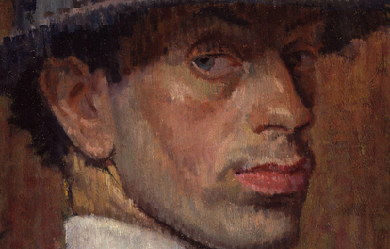

Isaac Rosenberg (25 November 1890 – 1 April 1918) was an English poet and artist. His Poems from the Trenches are recognized as some of the most outstanding poetry written during the First World War. He was born in Bristol, the second of six children and the eldest son of his parents (his twin brother died at birth), Barnett (formerly Dovber) and Hacha Rosenberg, who were Lithuanian Jewish immigrants to Great Britain from Dvinsk (now in Latvia). In 1897, the family moved to Stepney, a poor district of the East End of London, and one with a strong Jewish community.
#English #Jews #WarWriters #XXCentury
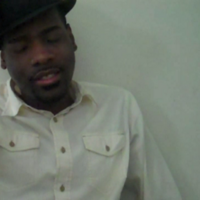
The Refined Poet is an american poet, spoken word artist, author, and songwriter. He has written numerous poems, books, articles, blogs, teaching resources, devotional materials, and songs for religious and secular audiences. His versatility in poetic prose provides inspiration for those who appreciate the poetry genre. His motto for his poetry is: "Write to Inspire. Write to Express. Write to Live." "I create poetry under the pseudonym of "The Refined Poet" due to the style of my writings. I do not write from a place of angst, frustration, or inner turmoil. My poetry comes from biblical, thoughtful introspection and consideration of various topics while respecting the many forms of the poetic genre." ~TRP~ More poetry by TRP: My other free poetry links where you will find more of my writings: More poetry at HELLO POETRY My writings at WRITER'S CAFE My Official Poetry Site at THE POETRY PLACE And yet more writings at DEEPUNDERGROUNDPOETRY.COM Even more poetry at ALL POETRY
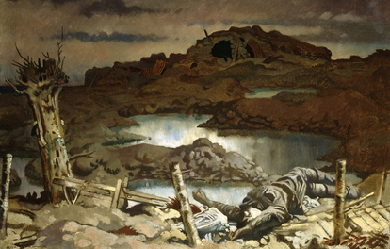
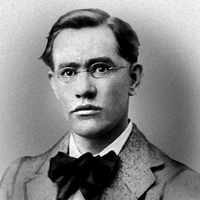
Francis Edward Ledwidge (19 August 1887– 31 July 1917) was an Irish war poet from County Meath. Sometimes known as the “poet of the blackbirds”, he was killed in action at the Battle of Passchendaele during World War I. Ledwidge was born at Janeville, Slane, in Ireland, the eighth of nine children in a poverty-stricken family. His parents believed in giving their children the best education they could afford. But when Francis was only five his father Patrick died prematurely, which forced his wife and the children out to work at an early age.

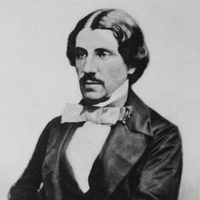
William Allingham (19 March 1824– 18 November 1889) was an Irish poet, diarist and editor. He wrote several volumes of lyric verse, and his poem 'The Faeries’ was much anthologised; but he is better known for his posthumously published Diary, in which he records his lively encounters with Tennyson, Carlyle and other writers and artists. His wife, Helen Allingham, was a well-known water-colorist and illustrator. Biography William Allingham was born on 19 March 1824 in the little port of Ballyshannon, County Donegal, Ireland, and was the son of the manager of a local bank who was of English descent. His younger brothers and sisters were Catherine (b. 1826), John (b. 1827), Jane (b. 1829), Edward (b. 1831; who lived only a few months) and a still-born brother (b. 1833). During his childhood his parents moved twice within the town, where the boy enjoyed the country sights and gardens, learned to paint and listened to his mother’s piano-playing. When he was nine, his mother died. He obtained a post in the custom-house of his native town, and held several similar posts in Ireland and England until 1870. During this period were published his Poems (1850; which included his well-known poem, 'The Fairies’) and Day and Night Songs (1855; illustrated by Dante Gabriel Rossetti and others). (Rossetti’s Letters to Allingham (1854–1870), edited by Dr. Birkbeck Hill, would be published in 1897.) Lawrence Bloomfield in Ireland, his most ambitious, though not his most successful work, a narrative poem illustrative of Irish social questions, appeared in 1864. He also edited The Ballad Book for the Golden Treasury series in 1864, and Fifty Modern Poems in 1865. In April 1870 Allingham retired from the customs service, moved to London and became sub-editor of Fraser’s Magazine, eventually becoming editor in succession to James Froude in June 1874– a post he would hold till 1879. On 22 August 1874 he married the illustrator, Helen Paterson, who was twenty-four years younger than he. His wife gave up her work as an illustrator and would become well known under her married name as a water-colour painter. At first the couple lived in London, at 12 Trafalgar Square, Chelsea, near Allingham’s friend, Thomas Carlyle, and it was there that they had their first two children– Gerald Carlyle (b. 1875 November) and Eva Margaret (b. 1877 February). In 1877 appeared Allingham’s Songs, Poems and Ballads. In 1881, after the death of Carlyle, the Allinghams moved to Sandhills near Witley in Surrey, where their third child, Henry William, was born in 1882. At this period Allingham published Evil May Day (1883), Blackberries (1884) and Irish Songs and Poems (1887). In 1888, because of William’s declining health, they moved back to the capital, to the heights of Hampstead village. But in 1889, on 18 November, William died at Hampstead. According to his wishes he was cremated. His ashes are interred at St. Anne’s church in his native Ballyshannon. Posthumously Allingham’s Varieties in Prose was published in 1893. William Allingham A Diary, edited by Mrs Helen Allingham and D. Radford, was published in 1907. It contains Allingham’s reminiscences of Alfred Tennyson, Thomas Carlyle and other writers and artists. Assessment and influence Working on an un-ostentatious scale, Allingham produced much lyrical and descriptive poetry, and the best of his pieces are thoroughly national in spirit and local colouring. His verse is clear, fresh, and graceful. His best-known poem remains his early work, “The Faeries”. Allingham had a substantial influence on W. B. Yeats; while the Ulster poet John Hewitt felt Allingham’s impact keenly, and attempted to revive his reputation by editing, and writing an introduction to, The Poems of William Allingham (Oxford University Press/ Dolmen Press, 1967). Allingham’s wide-ranging anthology of poetry, Nightingale Valley (1862) was to be the inspiration for the 1923 collection Come Hither by Walter de la Mare. We daren’t go a-hunting/For fear of little men... was quoted by the character of The Tinker near the beginning of the movie Willy Wonka & the Chocolate Factory, as well as in Mike Mignola’s comic book short story Hellboy: The Corpse, plus the 1973 horror film Don’t Look in the Basement. Several lines of the poem are quoted by Henry Flyte, a character in issue No. 65 of the Supergirl comic book, August 2011. This same poem was quoted in Andre Norton’s 1990 science fiction novel Dare To Go A-Hunting (ISBN 0-812-54712-8). Up the Airy Mountain is the title of a short story by Debra Doyle and James D. Macdonald; while the working title of Terry Pratchett’s The Wee Free Men was “For Fear of Little Men”. The Allingham Arms Hotel in Bundoran, Co. Donegal is named after him. References Wikipedia—https://en.wikipedia.org/wiki/William_Allingham

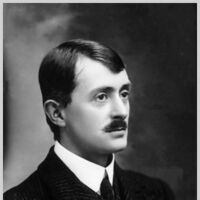
John Edward Masefield (1 June 1878 – 12 May 1967) was an English poet and writer, and Poet Laureate of the United Kingdom from 1930 until his death in 1967. He is remembered as the author of the classic children's novels The Midnight Folk and The Box of Delights, and poems, including "The Everlasting Mercy" and "Sea-Fever". Early life Masefield was born in Ledbury in Herefordshire, to Caroline and George Masefield, a solicitor. His mother died giving birth to his sister when Masefield was only six, and he went to live with his aunt. His father died soon after following a mental breakdown. After an unhappy education at the King's School in Warwick (now known as Warwick School), where he was a boarder between 1888 and 1891, he left to board the HMS Conway, both to train for a life at sea, and to break his addiction to reading, of which his aunt thought little. He spent several years aboard this ship and found that he could spend much of his time reading and writing. It was aboard the Conway that Masefield's love for story-telling grew. While on the ship, he listened to the stories told about sea lore. He continued to read, and felt that he was to become a writer and story teller himself. In 1894, Masefield boarded the Gilcruix, destined for Chile - this first voyage bringing him the experience of sea sickness. He recorded his experiences while sailing through the extreme weather, his journal entries reflecting a delight in seeing flying fish, porpoises, and birds, and was awed by the beauty of nature, including a rare sighting of a nocturnal rainbow on his voyage. On reaching Chile, Masefield suffered from sunstroke and was hospitalized. He eventually returned home to England as a passenger aboard a steam ship. In 1895, Masefield returned to sea on a windjammer destined for New York City. However, the urge to become a writer and the hopelessness of life as a sailor overtook him, and in New York, he deserted ship. He lived as a vagrant for several months, before returning to New York City, he did many odd jobs, finding work as an assistant to a bar keeper. Sometime around Christmas in 1895, Masefield read the December 1895 edition of Truth, a New York periodical, which contained the poem "The Piper of Arll" by Duncan Campbell Scott. Ten years later, Masefield wrote to Scott to tell him what reading that poem had meant to him: "I had never (till that time) cared very much for poetry, but your poem impressed me deeply, and set me on fire. Since then poetry has been the one deep influence in my life, and to my love of poetry I owe all my friends, and the position I now hold." For the next two years, Masefield was employed in a carpet factory, where long hours were expected and conditions were far from ideal. He purchased up to 20 books a week, and devoured both modern and classical literature. His interests at this time were diverse and his reading included works by George du Maurier, Dumas, Thomas Browne, Hazlitt, Dickens, Kipling, and R. L. Stevenson. Chaucer also became very important to him during this time, as well as poetry by Keats and Shelley. He eventually returned home to England in 1897 as a passenger aboard a steam ship. When Masefield was 23, he met his future wife, Constance Crommelin, who was 35. Educated in classics and English Literature, and a mathematics teacher, Constance was a match for Masefield despite the difference in age. The couple had two children (Judith, born in 1904, and Lewis, in 1910). By the time he was 24, Masefield's poems were being published in periodicals and his first collected works, Salt-Water Ballads (1902) was published, the poem "Sea-Fever" appearing in this book. Masefield then wrote the novels, Captain Margaret (1908) and Multitude and Solitude (1909). In 1911, after a long drought of poem writing, he composed "The Everlasting Mercy", the first of his narrative poems, and within the next year, Masefield had produced two more, "The Widow in the Bye Street" and "Dauber". As a result, Masefield became widely known to the public and was praised by critics, and in 1912, he was awarded the annual Edmond de Polignac prize. World War I to appointment as Poet Laureate When World War I began, though old enough to be exempted from military service, Masefield joined the staff of a British hospital for French soldiers, Hôpital Temporaire d'Arc-en-Barrois, Haute-Marne, France, serving briefly in 1915 as a hospital orderly, later publishing his own account of his experiences. After returning home, Masefield was invited to the United States on a three month lecture tour. Although Masefield's primary purpose was to lecture on English Literature, a secondary purpose was to collect information on the mood and views of Americans regarding the war in Europe. When he returned to England, he submitted a report to the British Foreign Office, and suggested that he be allowed to write a book about the failure of the allied efforts in the Dardanelles, which possibly could be used in the US in order to counter what he thought was German propaganda there. As a result, Masefield wrote Gallipoli. This work was a success, encouraging the British people, and lifting them somewhat from the disappointment they had felt as a result of the Allied losses in the Dardanelles. Due to the success of his wartime writings, Masefield met with the head of British Military Intelligence in France and was asked to write an account of the Battle of the Somme. Although Masefield had grand ideas for his book, he was denied access to the official records, and therefore, what was to be his preface to the book was published as "The Old Front Line", a description of the geography of the Somme area. In 1918, Masefield returned to America on his second lecture tour. Masefield spent much of his time speaking and lecturing to American soldiers waiting to be sent to Europe. These speaking engagements were very successful, and on one occasion, a battalion of all black soldiers danced and sang for him after his talk. During this tour, he matured as a public speaker and realized his ability to touch the emotions of his audience with his style of speaking, learning to speak publicly with his own heart, rather than from dry scripted speeches. Towards the end of his trip, both Yale and Harvard Universities conferred honorary Doctorates of Letters on him. Masefield entered the 1920s as an accomplished and respected writer. His family was able to settle on Boar's Hill, a somewhat rural setting not far from Oxford, and Masefield took up beekeeping, goat-herding and poultry-keeping. He continued to meet with success, the 1923 edition of "Collected Poems" selling approximately 80,000 copies. He produced three poems early in this decade. The first was Reynard The Fox, a poem that has been critically compared with works of Geoffrey Chaucer. This was followed by Right Royal and King Cole, poems where the relationship of humanity and nature emphasized. While Reynard is the best known of these, all met with acclaim. After King Cole Masefield turned away from the long poem and back to the novel, and from 1924 till the Second World War published twelve novels, which vary from stories of the sea (The Bird of Dawning, Victorious Troy) to social novels about modern England (The Hawbucks, The Square Peg), and from tales of an imaginary land in Central America (Sard Harker, Odtaa) to fantasies for children (The Midnight Folk, The Box of Delights). This variety in genre testifies most impressively to the breadth of his imagination, though it probably reduced his sales (which remained very respectable, however), since most readers of novels like knowing what to expect from their favourite authors. In this same period he wrote a large number of dramatic pieces. Most of these were based on Christian themes, and Masefield, to his amazement, encountered a ban on the performance of plays on biblical subjects that went back to the Reformation and had been revived a generation earlier to prevent production of Oscar Wilde's Salome. However, a compromise was reached, and in 1928 his "The Coming of Christ" was the first play to be performed in an English Cathedral since the Middle Ages. In 1921, Masefield received an Honorary Doctorate of Literature from Oxford University, and in 1923, organized the Oxford Recitations, an annual contest whose purpose was "to discover good speakers of verse and to encourage ‘the beautiful speaking of poetry.’" The Recitations were seen as a success given the numbers of contest applicants, the promotion of natural speech in poetical recitations, and the number of people learning how to listen to poetry. Masefield began to question however, whether the Recitations should continue as a contest, believing that the event should become more of a festival. In 1929, Masefield broke with the contest concept, and the Recitations came to an end. Later years and death In 1930, on the death of Robert Bridges, a new Poet Laureate was needed. Many felt that Rudyard Kipling was a likely choice, however, upon the recommendation of Prime Minister Ramsay MacDonald, King George V appointed Masefield, who remained in office until his death in 1967. The only person to hold the office for a longer period was Alfred, Lord Tennyson. On his appointment The Times newspaper said of him: ... his poetry could touch to beauty the plain speech of everyday life. Although the requirements of Poet Laureate had changed, and those in the office were rarely required to write verse for special occasions, Masefield took his appointment seriously and produced a large quantity of verse. Poems composed in his official capacity were sent to The Times. Masefield's modesty was shown by his inclusion of a stamped envelope with each submission so that his composition could be returned if it were found unacceptable for publication. Masefield was commissioned to write a poem to be set to music by the Master of the King's Musick, Sir Edward Elgar and performed at the unveiling of the Queen Alexandra Memorial by the King on 8 June 1932. This was the ode "So many true Princesses who have gone". After his appointment, Masefield was awarded the Order of Merit by King George V and many honorary degrees from British universities, in 1937 being elected as President of the Society of Authors. Masefield encouraged the continued development of English literature and poetry, and began the annual awarding of the Royal Medals for Poetry for a first or second published edition of poetry by a poet under the age of 35. Additionally, his speaking engagements were calling him further away, often on much longer tours, yet he still produced significant amounts of work in a wide variety of genres. To those he had already used he now added autobiography, producing New Chum, In the Mill, and So Long to Learn. Some critics judged Masefield to be an even finer writer of prose than of verse. It was not until about the age of 70 that Masefield slowed his pace due to illness. In 1960, Constance died at 93, after a long illness. Although her death was heartrending, he had spent a tiring year watching the woman he loved die. He continued his duties as Poet Laureate; In Glad Thanksgiving, his last book, was published when he was 88 years old. In late 1966, Masefield developed gangrene in his ankle. This spread to his leg, and he died of the infection on 12 May 1967. According to his wishes, he was cremated and his ashes placed in Poets’ Corner in Westminster Abbey. Later, the following verse was discovered, written by Masefield, addressed to his "Heirs, Administrators, and Assigns": Let no religious rite be done or read In any place for me when I am dead, But burn my body into ash, and scatter The ash in secret into running water, Or on the windy down, and let none see; And then thank God that there's an end of me. The Masefield Centre at Warwick School, which Masefield attended, and a high school in Ledbury, Herefordshire have been named in his honour. In 1977, Folkways Records released an album of his poetry, including some read by Masefield himself. Art song settings Many of Masefield's short poems were set as art songs by British composers of the time. Best known by far is John Ireland's "Sea Fever", the lasting popularity of which belies any mismatch between the urgency of the language and the slow, swung melody. Frederick Keel crafted several songs drawn from the Salt-Water Ballads and elsewhere. Of these, "Trade Winds" was particularly popular in its day, despite the tongue-twisting challenges the text presents to the singer. Keel's defiant setting of "Tomorrow", written while interned at Ruhleben during World War I, was frequently programmed at the BBC Proms after the war. Another memorable wartime composition is Ivor Gurney's climactic declamation of "By a bierside", a setting quickly set down in 1916 during a brief spell behind the lines. References Wikipedia - http://en.wikipedia.org/wiki/John_Masefield

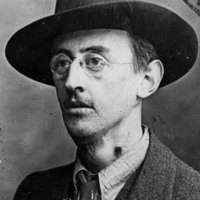
Joseph Mary Plunkett (Irish: Seosamh Máire Pluincéid, 21 November 1887– 12 May 1916) was an Irish nationalist, poet, journalist, and a leader of the 1916 Easter Rising. He was born at 26 Upper Fitzwilliam Street in one of Dublin’s most affluent neighbourhoods. Both his parents came from wealthy backgrounds, and his father, George Noble Plunkett, had been made a papal count. Despite being born into a life of privilege, young Joe Plunkett did not have an easy childhood.


Humble, respectful, persistent a few of the words that can be used to describe myself. Kimiko Watson, a young lady of 19 years, a teacher in training. I am a student of the Bethlehem Moravian Teachers' College as our motto says: 'Mihi Cura Futuri' which is to say 'My care if for the Future'. My grandmother is the reason why I write. She has always encourage me by telling me that I can be anything and do anything that i put my mind to. I will continue to believe that any thing that I concieve I can and will achieve.

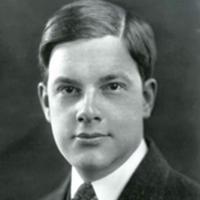
Joyce Kilmer (born as Alfred Joyce Kilmer; December 6, 1886– July 30, 1918) was an American writer and poet mainly remembered for a short poem titled “Trees” (1913), which was published in the collection Trees and Other Poems in 1914. Though a prolific poet whose works celebrated the common beauty of the natural world as well as his Roman Catholic religious faith, Kilmer was also a journalist, literary critic, lecturer, and editor. While most of his works are largely unknown, a select few of his poems remain popular and are published frequently in anthologies. Several critics—including both Kilmer’s contemporaries and modern scholars—have disparaged Kilmer’s work as being too simple and overly sentimental, and suggested that his style was far too traditional, even archaic. Many writers, including notably Ogden Nash, have parodied Kilmer’s work and style—as attested by the many parodies of “Trees”. At the time of his deployment to Europe during World War I, Kilmer was considered the leading American Roman Catholic poet and lecturer of his generation, whom critics often compared to British contemporaries G. K. Chesterton (1874–1936) and Hilaire Belloc (1870–1953). He enlisted in the New York National Guard and was deployed to France with the 69th Infantry Regiment (the famous "Fighting 69th") in 1917. He was killed by a sniper’s bullet at the Second Battle of the Marne in 1918 at the age of 31. He was married to Aline Murray, also an accomplished poet and author, with whom he had five children. Biography Early years and education: 1886–1908 Kilmer was born December 6, 1886 in New Brunswick, New Jersey, the fourth and youngest child, of Annie Ellen Kilburn (1849–1932), a minor writer and composer, and Dr. Frederick Barnett Kilmer (1851–1934), a physician and analytical chemist employed by the Johnson and Johnson Company and inventor of the company’s baby powder. He was named Alfred Joyce Kilmer after two priests at Christ Church in New Brunswick: Alfred R. Taylor, the curate; and the Rev. Dr. Elisha Brooks Joyce (1857–1926), the rector. Christ Church is the oldest Episcopal parish in New Brunswick and the Kilmer family were parishioners. Rector Joyce, who served the parish from 1883 to 1916, baptised the young Kilmer, who remained an Episcopalian until his 1913 conversion to Catholicism. Kilmer’s birthplace in New Brunswick, where the Kilmer family lived from 1886 to 1892, is still standing, and houses a small museum to Kilmer, as well as a few Middlesex County government offices. Kilmer entered Rutgers College Grammar School (now Rutgers Preparatory School) in 1895 at the age of 8. During his years at the Grammar School, Kilmer was editor-in-chief of the school’s paper, the Argo, and loved the classics but had difficulty with Greek. He won the first Lane Classical Prize, for oratory, and obtained a scholarship to Rutgers College which he would attend the following year. Despite his difficulties with Greek and mathematics, he stood at the head of his class in preparatory school. After graduating from Rutgers College Grammar School in 1904, he continued his education at Rutgers College (now Rutgers University) from 1904 to 1906. At Rutgers, Kilmer was associate editor of the Targum, the campus newspaper, and a member of the Delta Upsilon fraternity. However, he was unable to complete the curriculum’s rigorous mathematics requirement and was asked to repeat his sophomore year. Under pressure from his mother, Kilmer transferred to Columbia University in New York City. At Columbia, Kilmer was vice-president of the Philolexian Society (a literary society), associate editor of Columbia Spectator (the campus newspaper), and member of the Debating Union. He completed his Bachelor of Arts (A.B.) degree and graduated from Columbia on May 23, 1908. Shortly after graduation, on June 9, 1908, he married Aline Murray (1888–1941), a fellow poet to whom he had been engaged since his sophomore year at Rutgers. The Kilmers had five children: Kenton Sinclair Kilmer (1909–1995); Michael Barry Kilmer (1916–1927); Deborah ("Sister Michael") Clanton Kilmer (1914–1999) who was a Catholic nun at the Saint Benedict’s Monastery; Rose Kilburn Kilmer (1912–1917); and Christopher Kilmer (1917–1984). Years of writing and faith: 1909–1917 In the autumn of 1908, Kilmer was employed teaching Latin at Morristown High School in Morristown, New Jersey. At this time, he began to submit essays to Red Cross Notes (including his first published piece, an essay on the “Psychology of Advertising”) and his early poems to literary periodicals. Kilmer also wrote book reviews for The Literary Digest, Town & Country, The Nation, and The New York Times. By June 1909, Kilmer had abandoned any aspirations to continue teaching and relocated to New York City, where he focused solely on developing a career as a writer. From 1909 to 1912, Kilmer was employed by Funk and Wagnalls, which was preparing an edition of The Standard Dictionary that would be published in 1912. According to Hillis, Kilmer’s job “was to define ordinary words assigned to him at five cents for each word defined. This was a job at which one would ordinarily earn ten to twelve dollars a week, but Kilmer attacked the task with such vigor and speed that it was soon thought wisest to put him on a regular salary.” In 1911, Kilmer’s first book of verse was published, entitled Summer of Love. Kilmer would later write that “...some of the poems in it, those inspired by genuine love, are not things of which to be ashamed, and you, understanding, would not be offended by the others.” In 1912, Kilmer became a special writer for the New York Times Review of Books and the New York Times Sunday Magazine and was often engaged in lecturing. He moved to Mahwah, New Jersey, where he resided until his service and death in World War I. By this time he had become established as a published poet and as a popular lecturer. According to Robert Holliday, Kilmer “frequently neglected to make any preparation for his speeches, not even choosing a subject until the beginning of the dinner which was to culminate in a specimen of his oratory. His constant research for the dictionary, and, later on, for his New York Times articles, must have given him a store of knowledge at his fingertips to be produced at a moment’s notice for these emergencies.” When the Kilmers’ daughter Rose (1912–1917) was stricken with poliomyelitis (also known as infantile paralysis) shortly after birth, they turned to their religious faith for comfort. A series of correspondence between Kilmer and Father James J. Daly led the Kilmers to convert to Roman Catholicism, and they were received in the church in 1913. In one of these letters Kilmer writes that he “believed in the Catholic position, the Catholic view of ethics and aesthetics, for a long time,” and he “wanted something not intellectual, some conviction not mental– in fact I wanted Faith.” Kilmer would stop “every morning for months” on his way “to the office and prayed for faith,” claiming that when “faith did come, it came, I think, by way of my little paralyzed daughter. Her lifeless hands led me; I think her tiny feet know beautiful paths. You understand this and it gives me a selfish pleasure to write it down.” With the publication of “Trees” in the magazine Poetry in August 1913, Kilmer gained immense popularity as a poet across the United States. He had established himself as a successful lecturer—particularly one seeking to reach a Catholic audience. His close friend and editor Robert Holliday wrote that it “is not an unsupported assertion to say that he was in his time and place the laureate of the Catholic Church.” Trees and Other Poems (1914) was published the following year. Over the next few years, Kilmer was prolific in his output, managing an intense schedule of lectures, publishing a large number of essays and literary criticism, and writing poetry. In 1915 he became poetry editor of Current Literature and contributing editor of Warner’s Library of the World’s Best Literature. In 1916 and 1917, before the American entry into World War I, Kilmer would publish four books: The Circus and Other Essays (1916), a series of interviews with literary personages entitled Literature in the Making (1917), Main Street and Other Poems (1917), and Dreams and Images: An Anthology of Catholic Poets (1917). War years: 1917–1918 In April 1917, a few days after the United States entered World War I, Kilmer enlisted in the Seventh Regiment of the New York National Guard. In August, Kilmer was assigned as a statistician with the U.S. 69th Infantry Regiment (better known as the "Fighting 69th" and later re-designated the 165th Infantry Regiment), of the 42nd “Rainbow” Division, and quickly rose to the rank of sergeant. Though he was eligible for commission as an officer and often recommended for such posts during the course of the war, Kilmer refused, stating that he would rather be a sergeant in the Fighting 69th than an officer in any other regiment. Shortly before his deployment to Europe, the Kilmers’ daughter Rose had died, and twelve days later, their son Christopher was born. Before his departure, Kilmer had contracted with publishers to write a book about the war, deciding upon the title Here and There with the Fighting Sixty-Ninth. The regiment arrived in France in November 1917, and Kilmer wrote to his wife that he had not written “anything in prose or verse since I got here—except statistics—but I’ve stored up a lot of memories to turn into copy when I get a chance.” Kilmer did not write such a book; however, toward the end of the year, he did find time to write prose sketches and poetry. The most notable of his poems during this period was “Rouge Bouquet” (1918) which commemorated the deaths of two dozen members of his regiment in a German artillery barrage on American trench positions in the Rouge Bouquet forest north-east of the French village of Baccarat. At the time, this was a relatively quiet sector of the front, but the first battalion was struck by a German heavy artillery bombardment on the afternoon of March 7, 1918 that buried 21 men of the unit, killing 19 (of which 14 remained entombed). Kilmer sought more hazardous duty and was transferred to the military intelligence section of his regiment, in April 1918. In a letter to his wife, Aline, he remarked: “Now I’m doing work I love– and work you may be proud of. None of the drudgery of soldiering, but a double share of glory and thrills.” According to Hillis, Kilmer’s fellow soldiers had accorded him much respect for his battlefield demeanour—"He was worshipped by the men about him. I have heard them speak with awe of his coolness and his nerve in scouting patrols in no man’s land. This coolness and his habit of choosing, with typical enthusiasm, the most dangerous and difficult missions, led to his death.” Death and burial During the Second Battle of Marne there was heavy fighting throughout the last days of July 1918. On July 30, 1918, Kilmer volunteered to accompany Major William “Wild Bill” Donovan (later, in World War II, the founder of the Office of Strategic Services, forerunner to the Central Intelligence Agency) when Donovan’s battalion (1–165th Infantry) was sent to lead the day’s attack. During the course of the day, Kilmer led a scouting party to find the position of a German machine gun. When his comrades found him, some time later, they thought at first that he was peering over the edge of a little hill, where he had crawled for a better view. When he did not answer their call, they ran to him and found him dead. According to Father Francis P. Duffy: “A bullet had pierced his brain. His body was carried in and buried by the side of Ames. God rest his dear and gallant soul.” A sniper’s bullet likely killed him immediately. According to military records, Kilmer died on the battlefield near Muercy Farm, beside the Ourcq River near the village of Seringes-et-Nesles, in France, on July 30, 1918 at the age of 31. For his valor, Kilmer was posthumously awarded the Croix de Guerre (War Cross) by the French Republic. Kilmer was buried in the Oise-Aisne American Cemetery and Memorial, near Fere-en-Tardenois, Aisne, Picardy, France. A cenotaph erected to his memory is located on the Kilmer family plot in Elmwood Cemetery, in New Brunswick, New Jersey. A Memorial Mass was celebrated at St. Patrick’s Cathedral in Manhattan on October 14, 1918. Criticism and influence “Trees” Joyce Kilmer’s reputation as a poet is staked largely on the widespread popularity of one poem—"Trees" (1913). It was first published in the August 1913 issue of Poetry: A Magazine of Verse which had begun publishing the year before in Chicago, Illinois and was included as the title poem in a collection of poems Trees and Other Poems (1914). According to Kilmer’s oldest son, Kenton, the poem was written on February 2, 1913 when the family resided in Mahwah, New Jersey. It was written in the afternoon in the intervals of some other writing. The desk was in an upstairs room, by a window looking down a wooded hill. It was written in a little notebook in which his father and mother wrote out copies of several of their poems, and, in most cases, added the date of composition. On one page the first two lines of 'Trees’ appear, with the date, February 2, 1913, and on another page, further on in the book, is the full text of the poem. It was dedicated to his wife’s mother, Mrs. Henry Mills Alden, who was endeared to all her family. Many locations including Rutgers University (where Kilmer attended for two years), University of Notre Dame, as well as historians in Mahwah, New Jersey and in other places, have boasted that a specific tree was the inspiration for Kilmer’s poem. However, Kenton Kilmer refutes these claims, remarking that, Mother and I agreed, when we talked about it, that Dad never meant his poem to apply to one particular tree, or to the trees of any special region. Just any trees or all trees that might be rained on or snowed on, and that would be suitable nesting places for robins. I guess they’d have to have upward-reaching branches, too, for the line about ‘lifting leafy arms to pray.’ Rule out weeping willows.” The popular appeal of this simple poem is likely the source of its endurance despite the continuing negative opinion of the poem’s merits from scholars and critics. According to Robert Holliday, Kilmer’s friend and editor, “Trees” speaks “with authentic song to the simplest of hearts” and that “(t)he exquisite title poem now so universally known, made his reputation more than all the rest he had written put together. That impeccable lyric which made for immediate widespread popularity.” Its popularity has also led to parodies of the poem—some by noted poets and writers. The pattern of its first lines (I think that I shall never see / A poem lovely as a tree.) is of seemingly simple rhyme and meter and easy to mimic along with the poem’s choice of metaphors. One of the best known parodies is “Song of the Open Road” by American humorist and poet Ogden Nash (1902–1971): I think that I shall never see A billboard lovely as a tree. Indeed, unless the billboards fall, I’ll never see a tree at all. Influences upon Kilmer’s verse Kilmer’s early works were inspired by, and were imitative of, the poetry of Algernon Charles Swinburne, Gerard Manley Hopkins, Ernest Dowson, Aubrey Beardsley, and William Butler Yeats (and the Celtic Revival). It was later through the influence of works by Coventry Patmore, Francis Thompson, and those of Alice Meynell and her children Viola Meynell and Francis Meynell, that Kilmer seems to have become interested in Catholicism. Kilmer wrote of his influences: I have come to regard them with intense admiration. Patmore seems to me to be a greater poet than Francis Thompson. He has not the rich vocabulary, the decorative erudition, the Shelleyan enthusiasm, which distinguish the Sister Songs and the Hound of Heaven, but he has a classical simplicity, a restraint and sincerity which make his poems satisfying. Because he was initially raised Episcopalian (or Anglican), Kilmer became literary editor of the Anglican weekly, The Churchman, before his conversion to Catholicism. During this time he did considerable research into 16th and 17th century Anglican poets as well as metaphysical, or mystic poets of that time, including George Herbert, Thomas Traherne, Robert Herrick, Bishop Coxe, and Robert Stephen Hawker (the eccentric vicar of the Church of Saint Morwenna and Saint John the Baptist at Morwenstow in Cornwall)—the latter whom he referred to as “a coast life-guard in a cassock.” These poets also had an influence on Kilmer’s writings. Critics compared Kilmer to British Catholic writers Hilaire Belloc and G. K. Chesterton—suggesting that his reputation might have risen to the level where he would have been considered their American counterpart if not for his untimely death. Criticism of Kilmer’s work Kilmer’s death at age 31 removed from him the opportunity to develop into a more mature poet. Because “Trees” is often dismissed by modern critics and scholars as simple verse, much of Kilmer’s work (especially his literary criticism) has slipped into obscurity. Only a very few of his poems have appeared in anthologies, and with the exception of “Trees”—and to a much lesser extent “Rouge Bouquet” (1917–1918)—almost none have obtained lasting widespread popularity. The entire corpus of Kilmer’s work was produced between 1909 and 1918 when Romanticism and sentimental lyric poetry fell out of favor and Modernism took root—especially with the influence of the Lost Generation. In the years after Kilmer’s death, poetry went in drastically different directions, as is seen especially in the work of T. S. Eliot and Ezra Pound. Kilmer’s verse is conservative and traditional, and does not break the formal rules of poetics—he can be considered as one of the last poets of the Romantic era. His style has been criticized for not breaking free of traditional modes of rhyme, meter, and theme, and for being too sentimental to be taken seriously. Works * 1911: Summer of Love (poetry) * 1914: Trees and Other Poems (poetry) * 1916: The Circus and Other Essays (essays) * 1917: Main Street and Other Poems. (poetry) * 1917: The Courage of Enlightenment: An address delivered in Campion College, Prairie du Chien, Wisconsin, to the members of the graduating class, June 15, 1917. * 1917: Dreams and Images: An Anthology of Catholic Poets. (poetry anthology, edited by Kilmer) * 1917: Literature in the Making by some of its Makers (criticism) * 1918: Poems, Essays and Letters in Two Volumes Volume One: Memoir and Poems, Volume Two: prose works (collected works) (published posthumously, edited by Robert Cortes Holliday). * 1919: Kilmer’s unfinished history of the Fighting 69th (165th Infantry) is posthumously printed in Father Duffy’s Story by Francis P. Duffy (New York: Doran, 1919). * 1921: The Circus and Other Essays and Fugitive Pieces (published posthumously) References Wikipedia—https://en.wikipedia.org/wiki/Joyce_Kilmer

I've always been described an "old soul... wise beyond my years." I see through what meets the eye... and love even through hurt. I've always been lost in thought... my mind a breeding ground for spiritual chaos. My mind devours your innermost thoughts... they're safe from judgement. I've always struggled with finding balance... and my gifts often mistaken for oblivion. For when I cannot see- I can hear. What I cannot hear- I can feel. For what I cannot feel- I seek understanding. What I do not understand- I am drawn to. Life is a mystery and the days are the clues- The key to being in tune with others- is being in tune with you. 3/10/14


John Ronald Reuel Tolkien, 3 January 1892 – 2 September 1973) was an English writer, poet, philologist, and university professor who is best known as the author of the classic high-fantasy works The Hobbit, The Lord of the Rings, and The Silmarillion. He served Professor of Anglo-Saxon and English Language and Literature, and Fellow of Pembroke College, Oxford. He was at one time a close friend of C. S. Lewis—they were both members of the informal literary discussion group known as the Inklings. Tolkien was appointed a Commander of the Order of the British Empire by Queen Elizabeth II on 28 March 1972.

Hi, My name is Amanda Joannevaeh Steinbrecher. Everyone calls me Lady J. I am 27 years old. I have two children, a nine year old son named Shayn Azriel and a three year old daughter named Nacirema Jillian. I used to be very shy and timid. I would hide all of my poetry, so no one would see my true feelings and emotions. I have been writing poetry for as long as I can remember. In second grade I won an Echoes Theatre Award for my writing, and the awards, certificates, and recognitions have continued consistently on in my life. Poetry is my greatest outlet to express myself. I ahve always used poetry as my escape from pain, and always go back to re read everything I write to see where I have been in the past emotionally and mentally, and to stay update reading how far I have come. Some of my poetry will make you sad, or be sensitive to some readers, so I ask that you read at your own risk. Other pieces I have written are very motivatioanl and inspirational. I hope and pray that through my poetry I can help inspire others who may have faced some of the same struggles I have myself. I pray everyone on here with be abundantly bless with joy,peace,harmony, happiness, laughter, and Love. God Bless You All !! Sincerely, <3 Lady J. <3

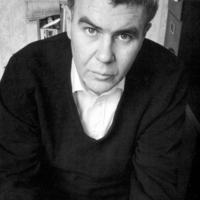
Raymond Clevie Carver, Jr. (May 25, 1938– August 2, 1988) was an American short-story writer and poet. Carver contributed to the revitalization of the American short story in literature during the 1980s. Early life Carver was born in Clatskanie, Oregon, a mill town on the Columbia River, and grew up in Yakima, Washington, the son of Ella Beatrice (née Casey) and Clevie Raymond Carver. His father, a sawmill worker from Arkansas, was a fisherman and heavy drinker. Carver’s mother worked on and off as a waitress and a retail clerk. His one brother, James Franklin Carver, was born in 1943. Carver was educated at local schools in Yakima, Washington. In his spare time, he read mostly novels by Mickey Spillane or publications such as Sports Afield and Outdoor Life, and hunted and fished with friends and family. After graduating from Yakima High School in 1956, Carver worked with his father at a sawmill in California. In June 1957, at age 19, he married 16-year-old Maryann Burk, who had just graduated from a private Episcopal school for girls. Their daughter, Christine La Rae, was born in December 1957. Their second child, a boy named Vance Lindsay, was born a year later. He supported his family by working as a delivery man, janitor, library assistant, and sawmill laborer. During their marriage, Maryann also supported the family by working as an administrative assistant and a high school English teacher, salesperson, and waitress. Writing career Carver became interested in writing in Paradise, California, where he had moved with his family to be close to his mother-in-law. While attending Chico State College, he enrolled in a creative writing course taught by the novelist John Gardner, a recent doctoral graduate of the Iowa Writers’ Workshop who became a mentor and had a major influence on Carver’s life and career. Carver’s first published story, “The Furious Seasons”, appeared in 1961. More florid than his later work, the story strongly bore the influence of William Faulkner. “Furious Seasons” was later used as a title for a collection of stories published by Capra Press, and is now in the recent collection, No Heroics, Please and Call If You Need Me. It is a common misconception that Carver was influenced by Ernest Hemingway, as both writers exhibit a similar economical and plain prose style. In his essay “On Influence”, however, Carver states clearly that, while he was an admirer of Hemingway’s fiction, he never saw him as an influence, citing instead the work of Lawrence Durrell. Carver continued his studies under the short-story writer Richard Cortez Day (like Gardner, a recent PhD alumnus of the Iowa program) at Humboldt State College in Arcata, California. After electing not to take the foreign language courses required by the English program, he received his B.A. in general studies in 1963. During this period he was first published and served as editor for Toyon, the university’s literary magazine, in which he published several of his own pieces under his own name as well as the pseudonym John Vale. With his B– average—exacerbated by his penchant to forsake coursework for literary endeavors—ballasted by a sterling recommendation from Day, Carver was accepted into the Iowa Writers’ Workshop on a $1,000 fellowship for the 1963–1964 academic year. Homesick for California and unable to fully acclimate to the program’s upper middle class milieu, he only completed 12 credits out of the 30 required for a M.A. degree or 60 for the M.F.A. degree. Although he was awarded a fellowship for a second year of study from program director Paul Engle after Maryann Carver personally interceded and compared her husband’s plight to Tennessee Williams’ deleterious experience in the program three decades earlier, Carver decided to leave the program at the end of the semester. Maryann (who postponed completing her education to support her husband’s educational and literary endeavors) eventually graduated from San Jose State College in 1970 and taught English at Los Altos High School until 1977, when she enrolled in the University of California, Santa Barbara’s doctoral program in English. In the mid-1960s, Carver and his family resided in Sacramento, California, where he briefly worked at a bookstore before taking a position as a night custodian at Mercy Hospital. He did all of the janitorial work in the first hour and then wrote at the hospital through the rest of the night. He audited classes at what was then Sacramento State College, including workshops with poet Dennis Schmitz. Carver and Schmitz soon became friends, and Carver wrote and published his first book of poems, Near Klamath, under Schmitz’s guidance. With the appearance of Will You Please Be Quiet, Please? in Martha Foley’s annual Best American Short Stories anthology and the impending publication of Near Klamath by the English Club of Sacramento State College, 1967 was a landmark year for Carver. He briefly enrolled in the library science graduate program at the University of Iowa that summer but returned to California following the death of his father. Shortly thereafter, the Carvers relocated to Palo Alto, California, so he could take his first white-collar job at Science Research Associates (a subsidiary of IBM), where he worked intermittently as a textbook editor and public relations director through 1970. Following a 1968 sojourn to Israel, the Carvers relocated to San Jose, California; as Maryann finished her undergraduate degree, he continued his graduate studies in library science at San Jose State through the end of 1969 before failing once again to take a degree. Nevertheless, he established vital literary connections with Gordon Lish and the poet/publisher George Hitchcock during this period. After the publication of “Neighbors” in the June 1971 issue of Esquire at the instigation of Lish (by now ensconced as the magazine’s fiction editor), Carver began to teach at the University of California, Santa Cruz at the behest of provost James B. Hall (an Iowa alumnus and early mentor to Ken Kesey at the University of Oregon), commuting from his new home in Sunnyvale, California. Following a succession of failed applications, he received a $4,000 Stegner Fellowship to study in the prestigious non-degree graduate creative writing program at Stanford University during the 1972–1973 term, where he cultivated friendships with Kesey-era luminaries Ed McClanahan and Gurney Norman in addition to contemporaneous fellows Chuck Kinder, Max Crawford, and William Kittredge. The fellowship enabled the Carvers to buy a house in Cupertino, California. He took on another teaching job at the University of California, Berkeley that year and briefly rented a pied-à-terre in the city; this development was largely precipitated by his instigation of an extramarital affair with Diane Cecily, a University of Montana administrator and mutual friend of Kittredge who would subsequently marry Kinder. During his years of working at miscellaneous jobs, rearing children, and trying to write, Carver started abusing alcohol. By his own admission, he essentially gave up writing and took to full-time drinking. In the fall semester of 1973, Carver was a visiting lecturer in the Iowa Writers’ Workshop with John Cheever, but Carver stated that they did less teaching than drinking and almost no writing. With the assistance of Kinder and Kittredge, he attempted to simultaneously commute to California and maintain his lectureship at Santa Cruz; after missing all but a handful of classes due to the inherent logistical hurdles of this arrangement (including various alcohol-related illnesses), Hall gently enjoined Carver to resign his position. The next year, after leaving Iowa City, Carver went to a treatment center to attempt to overcome his alcoholism, but continued drinking for three years. His first short story collection, Will You Please Be Quiet, Please?, was published in 1976. The collection itself was shortlisted for the National Book Award, though it sold fewer than 5,000 copies that year. After being hospitalized three times (between June 1976 and February or March 1977), Carver began his “second life” and stopped drinking on June 2, 1977, with the help of Alcoholics Anonymous. While he continued to regularly smoke marijuana and later experimented with cocaine at the behest of Jay McInerney during a 1980 visit to New York City, Carver believed he would have died of alcoholism at the age of 40 had he not overcome his drinking. Carver was nominated again in 1984 for his third major-press collection, Cathedral, the volume generally perceived as his best. Included in the collection are the award-winning stories “A Small, Good Thing”, and “Where I’m Calling From”. John Updike selected the latter for inclusion in The Best American Short Stories of the Century. For his part, Carver saw Cathedral as a watershed in his career, in its shift towards a more optimistic and confidently poetic style. Personal life and death Decline of first marriage The following excerpt from Scott Driscoll’s review of Maryann Burk Carver’s 2006 memoir describes the decline of Maryann and Raymond’s marriage. The fall began with Ray’s trip to Missoula, Mont., in '72 to fish with friend and literary helpmate Bill Kittredge. That summer Ray fell in love with Diane Cecily, an editor at the University of Montana, whom he met at Kittredge’s birthday party. “That’s when the serious drinking began. It broke my heart and hurt the children. It changed everything.” “By fall of '74", writes Carver, “he was more dead than alive. I had to drop out of the Ph.D. program so I could get him cleaned up and drive him to his classes”. Over the next several years, Maryann’s husband physically abused her. Friends urged her to leave Raymond. “But I couldn’t. I really wanted to hang in there for the long haul. I thought I could outlast the drinking. I’d do anything it took. I loved Ray, first, last and always.” Carver describes, without a trace of rancor, what finally put her over the edge. In the fall of '78, with a new teaching position at the University of Texas at El Paso, Ray started seeing Tess Gallagher, a writer from Port Angeles, who would become his muse and wife near the end of his life. “It was like a contretemps. He tried to call me to talk about where we were. I missed the calls. He knew he was about to invite Tess to Thanksgiving.” So he wrote a letter instead. “I thought, I’ve gone through all those years fighting to keep it all balanced. Here it was, coming at me again, the same thing. I had to get on with my own life. But I never fell out of love with him.” Second marriage Carver met the poet Tess Gallagher at a writers’ conference in Dallas, Texas, in November 1977. Beginning in January, 1979, Carver and Gallagher lived together in El Paso, Texas; in a borrowed cabin near Port Angeles, Washington; and in Tucson, Arizona. In 1980, the two moved to Syracuse, New York, where Gallagher had been appointed the coordinator of the creative writing program at Syracuse University; Carver taught as a professor in the English department. He and Gallagher jointly purchased a house in Syracuse, at 832 Maryland Avenue. In ensuing years, the house became so popular that the couple had to hang a sign outside that read “Writers At Work” in order to be left alone. In 1982, Carver and first wife, Maryann, were divorced. He married Gallagher in 1988 in Reno, Nevada. Six weeks later, on August 2, 1988, Carver died in Port Angeles, Washington, from lung cancer at the age of 50. In the same year, he was inducted into the American Academy of Arts and Letters. In December 2006, Gallagher published an essay in The Sun magazine, titled “Instead of Dying”, about alcoholism and Carver’s having maintained his sobriety. The essay is an adaptation of a talk she initially delivered at the Welsh Academy’s Academi Intoxication Conference in 2006. The first lines read: “Instead of dying from alcohol, Raymond Carver chose to live. I would meet him five months after this choice, so I never knew the Ray who drank, except by report and through the characters and actions of his stories and poems.” Death On August 2, 1988, Carver died from lung cancer at the age of 50. He is buried at Ocean View Cemetery in Port Angeles, Washington. The inscription on his tombstone reads: LATE FRAGMENT And did you get what you wanted from this life, even so? I did. And what did you want? To call myself beloved, to feel myself beloved on the earth. His poem “Gravy” is also inscribed. As Carver’s will directed, Tess Gallagher assumed the management of his literary estate. Memorials In Carver’s birth town of Clatskanie, Oregon, a memorial park and statue were constructed in the late 2000s spearheaded by the local Friends of the Library, using mostly local donations. Tess Gallagher was present at the dedication. It is located in the old town on the corner of Lillich and Nehalem Streets, across from the library. A block away, the building where Raymond Carver was born still stands. There is a plaque of Carver in the foyer. Legacy and posthumous publications The novelist Chuck Kinder published Honeymooners: A Cautionary Tale (2001), a roman à clef about his friendship with Carver in the 1970s. Carver’s high school sweetheart and first wife, Maryann Burk Carver, wrote a memoir of her years with Carver, What it Used to be Like: A Portrait of My Marriage to Raymond Carver (2006). The New York Times Book Review and San Francisco Chronicle named Carol Sklenicka’s unauthorized biography, Raymond Carver: A Writer’s Life (2009), published by Scribner, one of the Best Ten Books of that year; and the San Francisco Chronicle deemed it: “exhaustively researched and definitive biography”. Carver’s widow, Tess Gallagher, refused to engage with Sklenica. His final (incomplete) collection of seven stories, titled Elephant in Britain (included in “Where I’m Calling From”) was composed in the five years before his death. The nature of these stories, especially “Errand”, have led to some speculation that Carver was preparing to write a novel. Only one piece of this work has survived– the fragment “The Augustine Notebooks”, first printed in No Heroics, Please. Tess Gallagher published five Carver stories posthumously in Call If You Need Me; one of the stories ("Kindling") won an O. Henry Award in 1999. In his lifetime Carver won five O. Henry Awards; these winning stories were “Are These Actual Miles” (originally titled “What is it?”) (1972), “Put Yourself in My Shoes” (1974), “Are You A Doctor?” (1975), “A Small, Good Thing” (1983), and “Errand” (1988). Tess Gallagher fought with Knopf for permission to republish the stories in What We Talk About When We Talk About Love as they were originally written by Carver, as opposed to the heavily edited and altered versions that appeared in 1981 under the editorship of Gordon Lish. The book, entitled Beginners, was released in hardback on October 1, 2009 in Great Britain, followed by its U.S. publication in the Library of America edition that collected all of Carver’s short fiction in a single volume. Literary characteristics Carver’s career was dedicated to short stories and poetry. He described himself as “inclined toward brevity and intensity” and “hooked on writing short stories” (in the foreword of Where I’m Calling From, a collection published in 1988 and a recipient of an honorable mention in the 2006 New York Times article citing the best works of fiction of the previous 25 years). Another stated reason for his brevity was "that the story [or poem] can be written and read in one sitting." This was not simply a preference but, particularly at the beginning of his career, a practical consideration as he juggled writing with work. His subject matter was often focused on blue-collar experience, and was clearly reflective of his own life. Characteristics of minimalism are generally seen as one of the hallmarks of Carver’s work, although, as reviewer David Wiegand notes: Carver never thought of himself as a minimalist or in any category, for that matter. “He rejected categories generally,” Sklenicka says. “I don’t think he had an abstract mind at all. He just wasn’t built that way, which is why he’s so good at picking the right details that will stand for many things.” Carver’s editor at Esquire, Gordon Lish, was instrumental in shaping Carver’s prose in this direction– where his earlier tutor John Gardner had advised Carver to use fifteen words instead of twenty-five, Lish instructed Carver to use five in place of fifteen. Objecting to the “surgical amputation and transplantation” of Lish’s heavy editing, Carver eventually broke with him. During this time, Carver also submitted poetry to James Dickey, then poetry editor of Esquire. Carver’s style has also been described as dirty realism, which connected him with a group of writers in the 1970s and 1980s that included Richard Ford and Tobias Wolff (two writers with whom Carver was closely acquainted), as well as others such as Ann Beattie, Frederick Barthelme, and Jayne Anne Phillips. With the exception of Beattie, who wrote about upper-middle-class people, these were writers who focused on sadness and loss in the everyday lives of ordinary people—often lower-middle class or isolated and marginalized people. Works Fiction Collections * Will You Please Be Quiet, Please? (first published 1976) * Furious Seasons and other stories (1977) * What We Talk About When We Talk About Love (1981) * Cathedral (1983) * Elephant (1988)– this title only published in Great Britain; included as a section of Where I’m Calling From: New & Selected Stories in the U.S. Compilations * Where I’m Calling From: New & Selected Stories (1988) * Short Cuts: Selected Stories (1993)– published to accompany the Robert Altman film Short Cuts * Collected Stories (2009)– complete short fiction including Beginners Poetry Collections * Near Klamath (1968) * Winter Insomnia (1970) * At Night The Salmon Move (1976) * Fires (1983) * Where Water Comes Together With Other Water (1985) * Ultramarine (1986) * A New Path To The Waterfall (1989) * Gravy (Unknown year) Compilations * In a Marine Light: Selected Poems (1988) * All of Us: The Collected Poems (1996) Screenplays * Dostoevsky (1985, with Tess Gallagher) Films and theatre adaptations * Short Cuts directed by Robert Altman (1993), based on nine Carver short stories and a poem * Everything Goes directed by Andrew Kotatko (2004), starring Hugo Weaving and Abbie Cornish, based on Carver’s short story “Why Don’t You Dance?” * Whoever Was Using This Bed, also directed by Andrew Kotatko (2016), starring Jean-Marc Barr, Radha Mitchell and Jane Birkin, based on Carver’s short story of the same name * Jindabyne directed by Ray Lawrence (2006), based on Carver’s short story “So Much Water So Close to Home” * “After The Denim” directed by Gregory D. Goyins (2010) starring Tom Bower and Karen Landry, based on Carver’s short story “If It Please You” * Everything Must Go directed by Dan Rush (2010), and starring Will Ferrell, based on Carver’s short story “Why Don’t You Dance?” * Carver a production directed by William Gaskill at London’s Arcola Theatre in 1995, adapted from five Carver short stories including “What’s In Alaska?” “Put Yourself in My Shoes” and “Intimacy” * Studentova žena (Croatian) directed by Goran Kovač, based on “The Student’s Wife” * Carousel (Croatian) directed by Toma Zidić, inspired by “Ashtray” * Men Who Don’t Work directed by Alexander Atkins and Andrew Franks, based on “What Do You Do in San Francisco?” * Birdman or (The Unexpected Virtue of Ignorance), directed by Alejandro G. Iñárritu, depicts the mounting of a Broadway production of “What We Talk About When We Talk About Love” as its central storyline. The film’s main character, Riggan Thomson, attributes his choice of acting as a profession to a complimentary note he once received from Raymond Carver written on a cocktail napkin. The film also preludes with Carver’s poem “Late Fragment.” In February 2015, Birdman won four Oscars, including the Academy Award for Best Picture. Musical adaptions * Everything’s Turning to White is a folk rock track written and performed by Paul Kelly on the album So Much Water So Close to Home (1989), which was based on Carver’s short story of the same name. References Wikipedia—https://en.wikipedia.org/wiki/Raymond_Carver

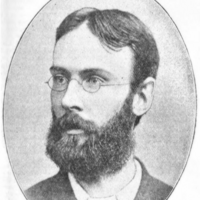
Francis William Lauderdale Adams (27 September 1862– 4 September 1893) was an essayist, poet, dramatist, novelist and journalist who produced a large volume of work in his short life. He was born in Malta the son of Andrew Leith Adams, an army surgeon, who became afterwards well known as a scientist, a fellow of the Royal Society, and an author of natural history books set in different parts of the British empire. Francis’ mother, Bertha Jane Grundy, became a well-known novelist. Francis was educated at Shrewsbury School and from 1879 served as an attaché in Paris. He took up a teaching position as an assistant master at Ventnor on the Isle of Wight, for two years. He joined the Social Democratic Federation in London in 1883. In 1884 he married Helen Uttley and migrated to Australia where he started work as a tutor on a station at Jerilderie, New South Wales, but soon moved on to Sydney and then Queensland, and dedicated himself to writing.
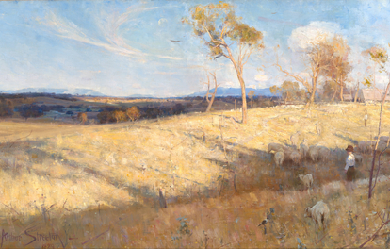
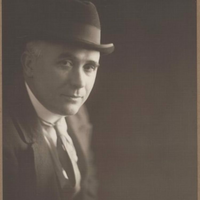
Edward George Dyson (4 March 1865– 22 August 1931) was an Australian journalist, poet, playwright and short story writer. He was the elder brother of talented illustrators Will Dyson and Ambrose Dyson. At 19, he began writing verse and, a few years later, embarked on a life of freelance journalism which lasted until his death. In 1896 he published a volume of poems, Rhymes from the Mines and, in 1898, the first collection of his short stories, Below and On Top.

My name is Kailey Nicolaou (Titanium-Heart), my friends call me Kailz or Elly. My work is about my life struggles that have occurred and about faith, hope, depression etc. I have been writing poems, novels and songs since I was young to express my feelings, darkest and lightest thoughts. A lot of my poems are about my daughter Summer Rose Nicolaou who died on 18th December 2008, this was one of my darkest times that I have ever had. I do not speak to many people about my issues, so poetry is my release. I truly hope you enjoy my poetry and follow me for more of my poems, if you do follow me, I will defiantly take the time to look at your work and follow your page as well. Thank you.
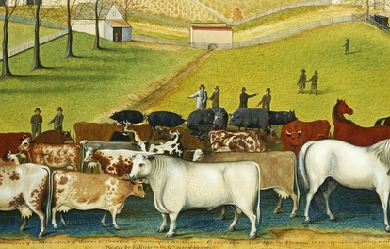

Julia Ann Moore, the “Sweet Singer of Michigan”, born Julia Ann Davis in Plainfield Township, Kent County, Michigan (December 1, 1847–June 5, 1920), was an American poet, or more precisely, poetaster. Like Scotland’s William McGonagall, she is famed chiefly for writing notoriously bad poetry. Biography Young Julia grew up on her family’s Michigan farm, the eldest of four children. When she was ten, her mother became ill, and Julia assumed many of her mother’s responsibilities. Her formal education was thereby limited. In her mid-teens, she started writing poetry and songs, mostly in response to the death of children she knew, but any newspaper account of disaster could inspire her. At age 17, she married Frederick Franklin Moore, a farmer. Julia ran a small store and, over the years, bore ten children, of whom six survived to adulthood. She continued to write poetry and songs. Moore’s first book of verse, The Sentimental Song Book was published in 1876 by C. M. Loomis of Grand Rapids, and quickly went into a second printing. A copy ended up in the hands of James F. Ryder, a Cleveland publisher, who republished it under the title The Sweet Singer of Michigan Salutes the Public. Ryder sent out numerous review copies to newspapers across the country, with a cover letter filled with low key mock praise. And so Moore received national attention. Following Ryder’s lead, contemporary reviews were amusedly negative. The Rochester Democrat wrote of Sweet Singer, that Shakespeare, could he read it, would be glad that he was dead …. If Julia A. Moore would kindly deign to shed some of her poetry on our humble grave, we should be but too glad to go out and shoot ourselves tomorrow. The Hartford Daily Times said that to meet such steady and unremitting demands on the lachrymal ducts one must be provided, as Sam Weller suspected Job Trotter was, ‘with a main, as is allus let on.’… The collection became a curious best-seller, though it is unclear whether this was due to public amusement with Moore’s poetry or genuine appreciation of the admittedly “sentimental” character of her poems. It was, more or less, the last gasp of that school of obituary poetry that had been broadly popular in the U. S. throughout the mid-19th century. Moore gave a reading and singing performance, with orchestral accompaniment, in 1877 at a Grand Rapids opera house. She managed to interpret jeering as criticism of the orchestra. Moore’s second collection, A Few Choice Words to the Public appeared in 1878, but found few buyers. Moore gave a second public performance in late 1878 at the same opera house. By then she had figured out that the praise directed to her was false and the jeering sincere. She began by admitting her poetry was “partly full of mistakes” and that “literary is a work very hard to do”. After the poetry and the laughter and jeering in response was over, Moore ended the show by telling the audience: You have come here and paid twenty-five cents to see a fool; I receive seventy-five dollars, and see a whole houseful of fools. Afterwards, her husband forbade her to publish any more poetry. Three more poems were eventually published, and she would write poems for friends. In 1880, she also published, in newspaper serialization, a short story “Lost and Found”, a strongly moralistic story about a drunkard, and a novella “Sunshine and Shadow”, a peculiar romance set in the American Revolution. The ending of “Sunshine and Shadow” was perhaps intended to be self-referential: the farmer facing foreclosure is gratefully rescued by his wife’s publishing her secret cache of fiction. According to some reports, though, her husband was not grateful, but embarrassed. Shamed or not, he moved the family 100 miles north to Manton in 1882. Moore’s notoriety was known in Manton, but the locals respected her, and did not cooperate with the occasional reporter trying to revisit the past. They were a successful business couple, he with an orchard and sawmill, she with a store. Her husband died in 1914. The next year, Julia republished “Sunshine and Shadow” in pamphlet form. She spent much of her widowhood “melancholy”, sitting on her porch. She died quietly in 1920. The news of her death was widely reported, sometimes with a light touch. On her poetry Some comparison to William McGonagall is worth making. Unlike McGonagall, Moore commanded a fairly wide variety of meters and forms, albeit like Emily Dickinson the majority of her verse is in the ballad meter. Like McGonagall, she held a maidenly bluestocking’s allegiance to the Temperance movement, and frequently indited odes to the joys of sobriety. Most importantly, like McGonagall, she was drawn to themes of accident, disaster, and sudden death; as has been said of A. E. Housman’s A Shropshire Lad, in her pages you can count the dead and wounded. Edgar Wilson Nye called her “worse than a Gatling gun”. Here, she is inspired by the Great Chicago Fire: The great Chicago Fire, friends, Will never be forgot; In the history of Chicago It will remain a darken spot. It was a dreadful horrid sight To see that City in flames; But no human aid could save it, For all skill was tried in vain. Her less morbid side is on display when she hymns Temperance Reform Clubs: Many a man joined the club That never drank a drachm, Those noble men were kind and brave They care not for the slang— The slang they meet on every side: “You’re a reform drunkard, too; You’ve joined the red ribbon brigade, Among the drunkard crew.” Despite her acknowledgment that “Literary is a work very difficult to do,” she did not approve of the life of Byron: The character of “Lord Byron” Was of a low degree, Caused by his reckless conduct, And bad company. He sprung from an ancient house, Noble, but poor, indeed. His career on earth, was marred By his own misdeeds. Influence Mark Twain was a self-described fan of Moore (though not for the reasons Moore would have liked). Twain alluded to her work in Following the Equator, and it is widely assumed that Moore served as a literary model for the character of Emmeline Grangerford in Adventures of Huckleberry Finn. Grangerford’s funereal ode to Stephen Dowling Botts: O no. Then list with tearful eye, Whilst I his fate do tell. His soul did from this cold world fly By falling down a well. They got him out and emptied him; Alas it was too late; His spirit was gone for to sport aloft In the realms of the good and great. (Twain) is not far removed from Moore’s poems on subjects like Little Libbie: One more little spirit to Heaven has flown, To dwell in that mansion above, Where dear little angels, together roam, In God’s everlasting love. (Moore) Moore was also the inspiration for comic poet Ogden Nash, as he acknowledged in his first book, and whose daughter reported that her work convinced Nash to become a “great bad poet” instead of a “bad good poet”. The Oxford Companion to American Literature describes Nash as using Moore’s hyperdithyrambic meters, pseudo-poetic inversions, gangling asymmetrical lines, extremely pat or elaborately inexact rimes, parenthetical dissertations, and unexpected puns. Selections of Moore appeared in D. B. Wyndham-Lewis and Charles Lee’s famous Stuffed Owl anthology, and in other collections of bad poetry. Most of her poetry was reprinted in a 1928 edition, which can be found online. Her complete poetry and prose, with biography, notes, and references, can be found in the Riedlinger edited collection Mortal Refrains. Most poetry collections reprint the latest, “best”, versions of their contents. Riedlinger has adopted the opposite philosophy. Moore has been grouped into the Western Michigan School of Bad Versemakers. Her local contemporaries—including Dr. William Fuller, S.H. Ewell, J.B. Smiley, and Fred Yapple—do not appear to have had relationships with each other, but their proximity and similar penchant for exceptionally laughable verse have led to their posthumous grouping together.
When bad people are caught or found out for doing bad things, people in positions of power are given the job of discipline or punishment. To the bad'ns, the PEOPLE in authority are scary/frightening. The people in authority are to be feared. In my life, no, my life is, the fear I have learned to have. This fear I am telling of is not of any man. This fear is of something much greater. This fear is of a power that is as clear as air to me now and as sure as the sun. This fear is not of anything you may know about. This fear is, simply put, my approach to everything in this world. There is an old book that is also a very good book which states a truth that you can bet your life on. If you like treasure hunts, check out Proverbs 1:7 when you have a Bible handy. Winkey Face. And to quote lil wayne's eyeballs, "Fear God"

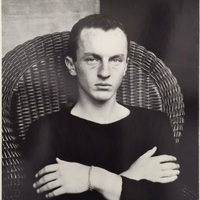
Francis Russell “Frank” O’Hara (March 27, 1926– July 25, 1966) was an American writer, poet and art critic. Because of his employment as a curator at the Museum of Modern Art, O’Hara became prominent in New York City’s art world. O’Hara is regarded as a leading figure in the New York School—an informal group of artists, writers and musicians who drew inspiration from jazz, surrealism, abstract expressionism, action painting and contemporary avant-garde art movements. O’Hara’s poetry is personal in tone and in content and described as reading “like entries in a diary”. Poet and critic Mark Doty has said O’Hara’s poetry is “urbane, ironic, sometimes genuinely celebratory and often wildly funny” containing “material and associations alien to academic verse” such as “the camp icons of movie stars of the twenties and thirties, the daily landscape of social activity in Manhattan, jazz music, telephone calls from friends”. O’Hara’s writing “sought to capture in his poetry the immediacy of life, feeling that poetry should be ”between two persons instead of two pages.” The Collected Poems of Frank O’Hara edited by Donald Allen (Knopf, 1971), the first of several posthumous collections, shared the 1972 National Book Award for Poetry. Life Frank O’Hara, the son of Russell Joseph O’Hara and Katherine (née Broderick) was born on March 27, 1926, at Maryland General Hospital, Baltimore, and grew up in Grafton, Massachusetts. He attended St. John’s High School. He grew up believing he had been born in June, but in fact had been born in March, his parents having disguised his true date of birth because he was conceived out of wedlock. He studied piano at the New England Conservatory in Boston from 1941 to 1944 and served in the South Pacific and Japan as a sonarman on the destroyer USS Nicholas during World War II. With the funding made available to veterans he attended Harvard University, where artist and writer Edward Gorey was his roommate. O’Hara was heavily influenced by visual art and by contemporary music, which was his first love (he remained a fine piano player all his life and would often shock new partners by suddenly playing swathes of Rachmaninoff when visiting them). His favorite poets were Arthur Rimbaud, Stéphane Mallarmé, Boris Pasternak, and Vladimir Mayakovsky. While at Harvard, O’Hara met John Ashbery and began publishing poems in the Harvard Advocate. Despite his love of music, O’Hara changed his major and graduated from Harvard in 1950 with a degree in English. He then attended graduate school at the University of Michigan in Ann Arbor. While at Michigan, he won a Hopwood Award and received his M.A. in English literature in 1951. That autumn O’Hara moved into an apartment in New York City with Joe LeSueur, who would be his roommate and sometime lover for the next 11 years. It was during this time that he began teaching at The New School. Known throughout his life for his extreme sociability, passion, and warmth, O’Hara had hundreds of friends and lovers throughout his life, many from the New York art and poetry worlds. Soon after arriving in New York, he was employed at the Museum of Modern Art, selling postcards at the admissions desk, and began to write seriously. O’Hara was active in the art world, working as a reviewer for Artnews, and in 1960 was Assistant Curator of Painting and Sculpture Exhibitions for the Museum of Modern Art. He was also a friend of the artists Willem de Kooning, Norman Bluhm, Larry Rivers and Joan Mitchell. In the early morning hours of July 24, 1966, O’Hara was struck by a jeep on the Fire Island beach, after the beach taxi in which he had been riding with a group of friends broke down in the dark. He died the next day of a ruptured liver. Attempts to bring negligent homicide charges against 23-year-old driver Kenneth L. Ruzicka were unsuccessful; many of O’Hara’s friends felt the local police had conducted a lax investigation to protect one of their own locals. O’Hara was buried in Green River Cemetery on Long Island. The painter Larry Rivers, a longtime friend and lover of O’Hara’s, delivered one of the eulogies, along with Bill Berkson, Edwin Denby and René d’Harnoncourt. Poetry While O’Hara’s poetry is generally autobiographical, it tends to be based on his observations of New York life rather than exploring his past. In his introduction to The Collected Poems of Frank O’Hara, Donald Allen says "that Frank O’Hara tended to think of his poems as a record of his life is apparent in much of his work.” O’Hara discussed this aspect of his poetry in a statement for Donald Allen’s New American Poetry: What is happening to me, allowing for lies and exaggerations which I try to avoid, goes into my poems. I don’t think my experiences are clarified or made beautiful for myself or anyone else, they are just there in whatever form I can find them. . .My formal “stance” is found at the crossroads where what I know and can’t get meets what is left of that I know and can bear without hatred. . .It may be that poetry makes life’s nebulous events tangible to me and restores their detail; or conversely that poetry brings forth the intangible quality of incidents which are all too concrete and circumstantial. Or each on specific occasions, or both all the time. His initial time in the Navy, during his basic training at Sampson Naval Training Center in upstate New York, along with earlier years spent at St. John’s High School began to shape a distinguished style of solitary observation that would later inform his poems. Immersed in regimented daily routine, first Catholic school then the Navy, he was able to separate himself from the situation and make witty and often singular studies. Sometimes these were cataloged for use in later writing, or, perhaps more often, put into letters. This skill of scrutinizing and recording during the bustle and churn of daily life would, later, be one of the important aspects that shaped O’Hara as an urban poet writing off the cuff. Among his friends, O’Hara was known to treat poetry dismissively, as something to be done only in the moment. John Ashbery claims he witnessed O’Hara “Dashing the poems off at odd moments– in his office at the Museum of Modern Art, in the street at lunchtime or even in a room full of people– he would then put them away in drawers and cartons and half forget them.” In 1959, he wrote a mock manifesto (originally published in Yugen in 1961) called Personism: A Manifesto, in which he explains his position on formal structure: “I don’t... like rhythm, assonance, all that stuff. You just go on your nerve. If someone’s chasing you down the street with a knife you just run, you don’t turn around and shout, ‘Give it up! I was a track star for Mineola Prep.’” He says, in response to academic overemphasis on form, “As for measure and other technical apparatus, that’s just common sense: if you’re going to buy a pair of pants you want them to be tight enough so everyone will want to go to bed with you. There’s nothing metaphysical about it.” He claims that on August 27, 1959, while talking to LeRoi Jones, he founded a movement called Personism which may be “the death of literature as we know it.” He says, “It does not have to do with personality or intimacy, far from it! But to give you a vague idea, one of its minimal aspects is to address itself to one person (other than the poet himself), thus evoking overtones of love without destroying love’s life-giving vulgarity, and sustaining the poet’s feelings toward the poem while preventing love from distracting him into feeling about the person.” His poetry shows the influence of Abstract Expressionism, Surrealism, Russian poetry, and poets associated with French Symbolism. Ashbery says, “The poetry that meant the most to him when he began writing was either French– Rimbaud, Mallarmé, the Surrealists: poets who speak the language of every day into the reader’s dream– or Russian– Pasternak and especially Mayakovsky, for whom he picked up what James Schuyler has called the ‘intimate yell.’” As part of the New York School of poetry, O’Hara to some degree encapsulated the compositional philosophy of New York School painters. Ashbery says, “Frank O’Hara’s concept of the poem as the chronicle of the creative act that produces it was strengthened by his intimate experience of Pollock’s, Kline’s, and de Kooning’s great paintings of the late '40s and early '50s and of the imaginative realism of painters like Jane Freilicher and Larry Rivers.” O’Hara was also influenced by William Carlos Williams. According to Marjorie Perloff in her book Frank O’Hara, Poet among Painters, he and Williams both use everyday language and simple statements split at irregular intervals. Perloff points out the similarities between O’Hara’s “Autobiographia Literaria” and Williams’s “Invocation and Conclusion.” At the end of “Autobiographia Literaria,” the speaker says, "And here I am, the/center of all beauty!/writing these poems!/Imagine!" Similarly, Williams at the end of “Invocation and Conclusion” says, “Now look at me!” These lines show a shared interest in the self as an individual who can only be himself in isolation. A similar idea is expressed in a line from Williams’s “Danse Russe”: "Who shall say I am not/ the happy genius of my household?” In popular culture In music In First Aid Kit’s song “To A Poet”, there is the lyric, “But Frank put it best when he said ”you can’t plan on the heart"", a reference to Frank O’Hara’s poem, My Heart. In films In the 2011 film Beastly, the lovestruck main characters read O’Hara’s poem “Having a Coke with You” aloud to each other. In literature O’Hara is a minor character in William Boyd’s 2002 novel Any Human Heart. In television In the season 1 episode of the HBO series Bored to Death, “The Case of the Missing Screenplay”, the main character loses a screenplay written by Jim Jarmusch about the life of Frank O’Hara. Several episodes of Mad Men (season 2) reference O’Hara’s collection of poetry, Meditations in an Emergency. The first episode shows a character reading from it over lunch in a bar (recalling O’Hara’s 1964 collection Lunch Poems) as does the last episode, which uses the book’s title as its episode title. In the twelfth episode, Don Draper finds his copy of Meditations in an Emergency in Anna Draper’s home in California. Landmarks On June 10, 2014, a plaque was unveiled outside one of O’Hara’s New York City residences, at 441 East Ninth Street. Poets Tony Towle, who inherited the apartment from O’Hara, and Edmund Berrigan read his works at the event. Bibliography * Works by Frank O’Hara at Open Library * Works about Frank O’Hara in libraries (WorldCat catalog) Books in lifetime * A City Winter and Other Poems. Two Drawings by Larry Rivers. (New York: Tibor de Nagy Gallery Editions, 1951 [sic, i.e. 1952]) * Oranges: 12 pastorals. (New York: Tibor de Nagy Gallery Editions, 1953; New York: Angel Hair Books, 1969) * Meditations in an Emergency. (New York: Grove Press, 1957; 1967) * Second Avenue. Cover drawing by Larry Rivers. (New York: Totem Press in Association with Corinth Books, 1960) * Odes. Prints by Michael Goldberg. (New York: Tiber Press, 1960) * Lunch Poems. (San Francisco, CA: City Lights Books, The Pocket Poets Series (No. 19), 1964) * Love Poems (Tentative Title). (New York: Tibor de Nagy Gallery Editions, 1965) Posthumous works * In Memory of My Feelings, commemorative volume illustrated by 30 U.S. artists and edited by Bill Berkson (New York: The Museum of Modern Art, 1967) * The Collected Poems of Frank O’Hara. Edited by Donald Allen with an introduction by John Ashbery (1st ed. New York: Knopf, 1971; Berkeley: University of California Press, 1995)—shared the National Book Award with Howard Moss, Selected Poems * The Selected Poems of Frank O’Hara. Edited by Donald Allen (New York: Knopf, 1974; Vintage Books, 1974) * Standing Still and Walking in New York. Edited by Donald Allen (Bolinas, Calif: Grey Fox Press; Berkeley, Calif: distributed by Bookpeople, 1975) * Early Writing. Edited by Donald Allen (Bolinas, Calif: Grey Fox; Berkeley: distributed by Bookpeople, 1977) * Poems Retrieved. Edited by Donald Allen (Bolinas, Calif: Grey Fox Press; Berkeley, Calif: distributed by Bookpeople, 1977) * Selected Plays. Edited by Ron Padgett, Joan Simon, and Anne Waldman (1st ed. New York: Full Court Press, 1978) * Amorous Nightmares of Delay: Selected Plays. (Baltimore, MD: Johns Hopkins University Press, 1997) * Selected Poems. Edited by Mark Ford (New York: Knopf, 2008) * Poems Retrieved (City Lights, 2013) * Lunch Poems. 50th Anniversary Edition (City Lights, 2014) Exhibitions * Jackson Pollock. (New York: George Braziller, Inc. 1959) * New Spanish painting and sculpture. (New York: The Museum of Modern Art, 1960) * Robert Motherwell: with selections from the artist’s writings. by Frank O’Hara (New York: The Museum of Modern Art, 1965) * Nakian. (New York: The Museum of Modern Art, 1966) * Art Chronicles, 1954–1966. (New York: G. Braziller, 1975) On O’Hara * Frank O’Hara: Poet Among Painters by Marjorie Perloff (New York: G. Braziller, 1977; 1st paperback ed. Austin: University of Texas Press, 1979; Chicago, IL: University of Chicago Press, with a new introduction, 1998) * Frank O’Hara by Alan Feldman (Boston: Twayne Publishers, 1979 . . . frontispiece photo of Frank O’Hara c. by Richard Moore) * Frank O’Hara: A Comprehensive Bibliography by Alexander Smith, Jr. (New York: Garland, 1979; 2nd print. corrected, 1980) * Homage to Frank O’Hara. edited by Bill Berkson and Joe LeSueur, cover by Jane Freilicher (originally published as Big Sky 11/12 in April, 1978; rev. ed. Berkeley: Creative Arts Book Company, 1980) * Art with the touch of a poet: Frank O’Hara. exhibit companion compiled by Hildegard Cummings (Storrs, Conn.: The William Benton Museum of Art, University of Connecticut, 1983 . . . January 24-March 13, 1983) * Frank O’Hara: To Be True To A City edited by Jim Elledge (Ann Arbor: University of Michigan Press, 1990) * City Poet: The Life and Times of Frank O’Hara by Brad Gooch (1st ed. New York: Knopf, 1993; New York: HarperPerennial, 1994) * In Memory of My Feelings: Frank O’Hara and American Art by Russell Ferguson (Los Angeles: The Museum of Contemporary Art, Los Angeles / University of California Press, 1999) * Hyperscapes in the Poetry of Frank O’Hara: Difference, Homosexuality, Topography by Hazel Smith (Liverpool University Press, Liverpool, 2000) * Digressions on Some Poems by Frank O’Hara by Joe LeSueur (New York: Farrar, Straus and Giroux, 2003). * Frank O’Hara: The Poetics of Coterie by Lytle Shaw (Iowa City: University of Iowa Press, 2006) Painting * Alice Neel, Frank O’Hara, 1960, 85.7 x 40.6 x 2.5 cm, National Portrait Gallery, Smithsonian Institution * Larry Rivers, 'O’Hara Nude with Boots’ (1954), 97" x 53", Larry Rivers Foundation * Jasper Johns, ‘In Memory of My Feelings - Frank O’Hara’ (1961), 40 1/4" x 60", MCA, Chicago * Wynn Chamberlain, Poets (Clothed), Poets (Naked), 1964. Earl McGrath collection. * Alfred Leslie, a link to The Death Cycle, 1966, - The Death of Frank O’Hara [2] References Wikipedia—https://en.wikipedia.org/wiki/Frank_O’Hara

The world either goes too fast or too slow. Things are either too good to be true or too awful we want them to be nightmares. Sometimes words aren't enough to describe what we feel inside, but still we try, try to slow down the world fast forward it and we try to describe what we feel and who we are. And we try to make sense of things and find explanation for the things that are too good or too awful, so that hopefully we have peace at mind.
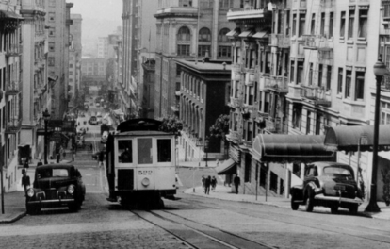
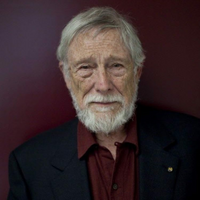
Gary Snyder (born May 8, 1930) is an American man of letters. Perhaps best known as a poet (often associated with the Beat Generation and the San Francisco Renaissance), he is also an essayist, lecturer, and environmental activist. He has been described as the "poet laureate of Deep Ecology". Snyder is a winner of a Pulitzer Prize for Poetry and the American Book Award. His work, in his various roles, reflects an immersion in both Buddhist spirituality and nature. Snyder has translated literature into English from ancient Chinese and modern Japanese. For many years, Snyder served as a faculty member at the University of California, Davis, and he also served for a time on the California Arts Council. Early life Gary Sherman Snyder was born in San Francisco, California to Harold and Lois Hennessy Snyder. Snyder is of German, Scots-Irish, and English ancestry. His family, impoverished by the Great Depression, moved to King County, Washington, when he was two years old. There they tended dairy cows, kept laying hens, had a small orchard, and made cedar-wood shingles, until moving to Portland, Oregon ten years later. At the age of seven, Snyder was laid up for four months by an accident. "So my folks brought me piles of books from the Seattle Public Library," he recalled in interview, "and it was then I really learned to read and from that time on was voracious — I figure that accident changed my life. At the end of four months, I had read more than most kids do by the time they're eighteen. And I didn't stop." Also during his ten childhood years in Washington, Snyder became aware of the presence of the Coast Salish people and developed an interest in the Native American peoples in general and their traditional relationship with nature. In 1942, following his parents' divorce, Snyder moved to Portland, Oregon with his mother and his younger sister, Anthea. Their mother, Lois Snyder Hennessy (born Wilkey), worked during this period as a reporter for The Oregonian. One of Gary's boyhood jobs was as a newspaper copy boy, also at the Oregonian. Also, during his teen years, he attended Lincoln High School, worked as a camp counselor, and went mountain climbing with the Mazamas youth group. Climbing remained an interest of his, especially during his twenties and thirties. In 1947, he started attending Reed College on a scholarship. Here he met, and for a time, roomed with the education author Carl Proujan and Philip Whalen and Lew Welch. At Reed, Snyder published his first poems in a student journal. He also spent the summer of 1948 working as a seaman. He joined the now defunct Marine Cooks and Stewards union to get this job, and would later work as a seaman in the mid-1950s to gain experience of other cultures in port cities. Snyder married Alison Gass in 1950; they separated after seven months, and divorced in 1952. While attending Reed, Snyder did folklore research on the Warm Springs Indian Reservation in central Oregon. He graduated with a dual degree in anthropology and literature in 1951. He spent the following few summers working as a timber scaler at Warm Springs, developing relationships with its people that were less rooted in academia. This experience formed the basis for some of his earliest published poems (including "A Berry Feast"), later collected in the book The Back Country. He also encountered the basic ideas of Buddhism and, through its arts, some of the Far East's traditional attitudes toward nature. He went to Indiana University with a graduate fellowship to study anthropology. (Snyder also began practicing self-taught Zen meditation.) He left after a single semester to return to San Francisco and to 'sink or swim as a poet'. Snyder worked for two summers in the North Cascades in Washington as a fire lookout, on Crater Mountain in 1952 and Sourdough Mountain in 1953 (both locations on the upper Skagit River). His attempts to get another lookout stint in 1954 (at the peak of McCarthyism), however, failed. He had been barred from working for the government, due to his association with the Marine Cooks and Stewards. Instead, he went back to Warm Springs to work in logging as a chokersetter (fastening cables to logs). This experience contributed to his Myths and Texts and the essay Ancient Forests of the Far West. The Beats Back in San Francisco, Snyder lived with Whalen, who shared his growing interest in Zen. Snyder's reading of the writings of D.T. Suzuki had in fact been a factor in his decision not to continue as a graduate-student in anthropology, and in 1953 he enrolled at the University of California, Berkeley to study Asian culture and languages. He studied ink and wash painting under Chiura Obata and Tang Dynasty poetry under Ch'en Shih-hsiang. Snyder continued to spend summers working in the forests, including one summer as a trail-builder in Yosemite. He spent some months in 1955 and 1956 living in a cabin (which he dubbed "Marin-an") outside Mill Valley, California with Jack Kerouac. It was also at this time that Snyder was an occasional student at the American Academy of Asian Studies, where Saburō Hasegawa and Alan Watts, among others, were teaching. Hasegawa introduced Snyder to the treatment of landscape painting as a meditative practice. This inspired Snyder to attempt something equivalent in poetry, and with Hasegawa's encouragement, he began work on Mountains and Rivers without End, which would be completed and published forty years later. During these years, Snyder was writing and collecting his own work, as well as embarking on the translation of the "Cold Mountain" poems by the 8th-century Chinese recluse Han Shan; this work appeared in chapbook-form in 1969, under the title Riprap & Cold Mountain Poems. Snyder met Allen Ginsberg when the latter sought Snyder out on the recommendation of Kenneth Rexroth. Then, through Ginsberg, Snyder and Kerouac came to know each other. This period provided the materials for Kerouac's novel The Dharma Bums, and Snyder was the inspiration for the novel's main character, Japhy Ryder, in the same way Neal Cassady had inspired Dean Moriarty in On the Road. As the large majority of people in the Beat movement had urban backgrounds, writers like Ginsberg and Kerouac found Snyder, with his backcountry and manual-labor experience and interest in things rural, a refreshing and almost exotic individual. Lawrence Ferlinghetti later referred to Snyder as 'the Thoreau of the Beat Generation'. Snyder read his poem "A Berry Feast" at the poetry reading at the Six Gallery in San Francisco (October 7, 1955) that heralded what was to become known as the San Francisco Renaissance. This also marked Snyder's first involvement with the Beats, although he was not a member of the original New York circle, but rather entered the scene through his association with Kenneth Rexroth. As recounted in Kerouac's Dharma Bums, even at age 25 Snyder felt he could have a role in the fateful future meeting of West and East. Snyder's first book, Riprap, which drew on his experiences as a forest lookout and on the trail-crew in Yosemite, was published in 1959. Japan and India Independently, some of the Beats, including Philip Whalen, had become interested in Zen, but Snyder was one of the more serious scholars of the subject among them, preparing in every way he could think of for eventual study in Japan. In 1955, the First Zen Institute of America offered him a scholarship for a year of Zen training in Japan, but the State Department refused to issue him a passport, informing him that "it has been alleged you are a Communist." A subsequent District of Columbia Court of Appeals ruling forced a change in policy, and Snyder got his passport. In the end, his expenses were paid by Ruth Fuller Sasaki, for whom he was supposed to work; but initially he served as personal attendant and English tutor to Zen abbot Miura Isshu, at Rinko-in, a temple in Shokoku-ji in Kyoto, where Dwight Goddard and R. H. Blyth had preceded him. Mornings, after zazen, sutra chanting, and chores for Miura, he took Japanese classes, bringing his spoken Japanese up to a level sufficient for kōan study. He developed a friendship with Philip Yampolsky, who took him around Kyoto. In early July 1955, he took refuge and requested to become Miura's disciple, thus formally becoming a Buddhist. He returned to California via the Persian Gulf, Turkey, Sri Lanka and various Pacific Islands, in 1958, voyaging as a crewman in the engine room on the oil freighter Sappa Creek, and took up residence at Marin-an again. He turned one room into a zendo, with about six regular participants. In early June, he met the poet Joanne Kyger. She became his girlfriend, and eventually his wife. In 1959, he shipped for Japan again, where he rented a cottage outside Kyoto. He became the first foreign disciple of Oda Sesso Roshi, the new abbot of Daitoku-ji. He married Kyger on February 28, 1960, immediately after her arrival, which Sasaki insisted they do, if they were to live together and be associated with the First Zen Institute of America. Snyder and Joanne Kyger were married from 1960 to 1965. During the period between 1956 and 1969, Snyder went back and forth between California and Japan, studying Zen, working on translations with Ruth Fuller Sasaki, and finally living for a while with a group of other people on the small, volcanic island of Suwanosejima. His previous study of written Chinese assisted his immersion in the Zen tradition (with its roots in Tang Dynasty China) and enabled him to take on certain professional projects while he was living in Japan. Snyder received the Zen precepts and a dharma name (Chofu, "Listen to the Wind"), and lived sometimes as a de facto monk, but never registered to become a priest and planned eventually to return to the United States to 'turn the wheel of the dharma'. During this time, he published a collection of his poems from the early to mid '50s, Myths & Texts (1960), and Six Sections from Mountains and Rivers Without End (1965). This last was the beginning of a project that he was to continue working on until the late 1990s. Much of Snyder's poetry expresses experiences, environments, and insights involved with the work he has done for a living: logger, fire-lookout, steam-freighter crew, translator, carpenter, and itinerant poet, among other things. During his years in Japan, Snyder was also initiated into Shugendo, a form of ancient Japanese animism, (see also Yamabushi). In the early 1960s he traveled for six months through India with his wife Joanne, Allen Ginsberg, and Peter Orlovsky. Snyder and Joanne Kyger separated soon after a trip to India, and divorced in 1965. Dharma Bums In the 1950s, Snyder took part in the rise of a strand of Buddhist anarchism emerging from the Beat movement. Snyder was the inspiration for the character Japhy Rider in Jack Kerouac's novel The Dharma Bums (1958). Snyder had spent considerable time in Japan studying Zen Buddhism, and in 1961 published an essay, Buddhist Anarchism, where he described the connection he saw between these two traditions, originating in different parts of the world: "The mercy of the West has been social revolution; the mercy of the East has been individual insight into the basic self/void." He advocated "using such means as civil disobedience, outspoken criticism, protest, pacifism, voluntary poverty and even gentle violence" and defended "the right of individuals to smoke ganja, eat peyote, be polygymous, polyandrous or homosexual" which he saw as being banned by "the Judaeo-Capitalist-Christian-Marxist West". Kitkitdizze In 1966, Snyder joined Allen Ginsberg, Zentatsu Richard Baker, Roshi of the San Francisco Zen Center, and Donald Walters, a.k.a. "Swami Kriyananda," to buy 100 acres (0.40 km2) in the Sierra foothills, north of Nevada City, California. In 1970, this would become his home, with the Snyder family's portion being named Kitkitdizze. Snyder spent the summers of 1967 and 1968 with a group of Japanese back-to-the-land drop-outs known as "the Tribe" on Suwanosejima (a small Japanese island in the East China Sea), where they combed the beaches, gathered edible plants, and fished. On the island, on August 6, 1967, he married Masa Uehara, whom he had met in Osaka a year earlier. In 1968, they moved to California with their infant son, Kai (born April 1968). Their second son, Gen, was born a year later. In 1971, they moved to the San Juan Ridge in the foothills of the Sierra Nevada of Northern California, near the South Yuba River, where they and friends built a house that drew on rural-Japanese and Native-American architectural ideas. In 1967 his book The Back Country appeared, again mainly a collection of poems stretching back over about fifteen years. Snyder devoted a section at the end of the book to his translations of eighteen poems by Kenji Miyazawa. Later life and writings Regarding Wave appeared in 1969, a stylistic departure offering poems that were more emotional, metaphoric, and lyrical. From the late 1960s, the content of Snyder's poetry increasingly had to do with family, friends, and community. He continued to publish poetry throughout the 1970s, much of it reflecting his re-immersion in life on the American continent and his involvement in the back-to-the-land movement in the Sierra foothills. His 1974 book Turtle Island, titled after a Native American name for the North American continent, won a Pulitzer Prize. It also influenced numerous West Coast Generation X writers, including Alex Steffen, Bruce Barcott and Mark Morford. His 1983 book Axe Handles, won an American Book Award. Snyder wrote numerous essays setting forth his views on poetry, culture, social experimentation, and the environment. Many of these were collected in Earth House Hold (1969), The Old Ways (1977), The Real Work (1980), The Practice of the Wild (1990), A Place in Space (1995), and The Gary Snyder Reader (1999). In 1979, Snyder published He Who Hunted Birds in His Father's Village: The Dimensions of a Haida Myth, based on his Reed thesis. Snyder's journals from his travel in India in the mid-1960s appeared in 1983 under the title Passage Through India. In these, his wide-ranging interests in cultures, natural history, religions, social critique, contemporary America, and hands-on aspects of rural life, as well as his ideas on literature, were given full-blown articulation. In 1986, Snyder became a professor in the writing-program at the University of California, Davis. Snyder is now professor emeritus of English. Snyder was married to Uehara for twenty-two years; the couple divorced in 1989. Snyder married Carole Lynn Koda (October 3, 1947 – June 29, 2006), who would write Homegrown: Thirteen brothers and sisters, a century in America, in 1991, and remained married to her until her death of cancer. She had been born in the third generation of a successful Japanese-American farming family, noted for its excellent rice. She shared Buddhism, extensive travels, and work with Snyder, and performed independent work as a naturalist. As Snyder's involvement in environmental issues and his teaching grew, he seemed to move away from poetry for much of the 1980s and early 1990s. However, in 1996 he published the complete Mountains and Rivers Without End, a mixture of the lyrical and epic modes celebrating the act of inhabitation on a specific place on the planet. This work was written over a 40-year period. It has been translated into Japanese and French. In 2004 Snyder published Danger on Peaks, his first collection of new poems in twenty years. Snyder was awarded the Levinson Prize from the journal Poetry, the American Poetry Society Shelley Memorial Award (1986), was inducted into the American Academy of Arts and Letters (1987), and won the 1997 Bollingen Prize for Poetry and, that same year, the John Hay Award for Nature Writing. Snyder also has the distinction of being the first American to receive the Buddhism Transmission Award (for 1998) from the Japan-based Bukkyo Dendo Kyokai Foundation. For his ecological and social activism, Snyder was named as one of the 100 visionaries selected in 1995 by Utne Reader. Snyder's life and work was celebrated in John J. Healy's 2010 documentary The Practice of the Wild. The film, which debuted at the 53rd San Francisco International Film Festival, features wide-ranging, running conversations between Snyder and poet, writer and longtime colleague Jim Harrison, filmed mostly on the Hearst Ranch in San Simeon, California. The film also shows archival photographs and film of Snyder's life. Poetic work Gary Snyder uses mainly common speech-patterns as the basis for his lines, though his style has been noted for its "flexibility" and the variety of different forms his poems have taken. He does not typically use conventional meters nor intentional rhyme. "Love and respect for the primitive tribe, honour accorded the Earth, the escape from city and industry into both the past and the possible, contemplation, the communal", such, according to Glyn Maxwell, is the awareness and commitment behind the specific poems. The author and editor Stewart Brand once wrote: "Gary Snyder's poetry addresses the life-planet identification with unusual simplicity of style and complexity of effect." According to Jody Norton, this simplicity and complexity derives from Snyder's use of natural imagery (geographical formations, flora, and fauna)in his poems. Such imagery can be both sensual at a personal level yet universal and generic in nature. In the 1968 poem "Beneath My Hand and Eye the Distant Hills, Your Body," the author compares the intimate experience of a lover's caress with the mountains, hills, cinder cones, and craters of the Uintah Mountains. Readers become explorers on both a very private level as well as a very public and grand level. A simplistic touch becoming a very complex interaction occurring at multiple levels. This is the effect Snyder intended. In an interview with Faas, he states." There is a direction which is very beautiful, and that's the direction of the organism being less and less locked into itself, less and less locked into its own body structure and its relatively inadequate sense organs, towards a state where the organism can actually go out from itself and share itself with others." Snyder has always maintained that his personal sensibility arose from his interest in Native Americans and their involvement with nature and knowledge of it; indeed, their ways seemed to resonate with his own. And he has sought something akin to this through Buddhist practices, Yamabushi initiation, and other experiences and involvements. However, since his youth he has been quite literate, and he has written about his appreciation of writers of similar sensibilities, like D. H. Lawrence, William Butler Yeats, and some of the great ancient Chinese poets. William Carlos Williams was another influence, especially on Snyder's earliest published work. Starting in high school, Snyder read and loved the work of Robinson Jeffers, his predecessor in poetry of the landscape of the American West; but, whereas Jeffers valued nature over humankind, Snyder saw humankind as part of nature. Snyder commented in interview "I have some concerns that I'm continually investigating that tie together biology, mysticism, prehistory, general systems theory". Snyder argues that poets, and humans in general, need to adjust to very long timescales, especially when judging the consequences of their actions. His poetry examines the gap between nature and culture so as to point to ways in which the two can be more closely integrated. In 2004, receiving the Masaoka Shiki International Haiku Awards Grand Prize, Snyder highlighted traditional ballads and folk songs, Native American songs and poems, William Blake, Walt Whitman, Jeffers, Ezra Pound, Noh drama, Zen aphorisms, Federico García Lorca, and Robert Duncan as significant influences on his poetry, but added, "the influence from haiku and from the Chinese is, I think, the deepest." Romanticism Snyder is among those writers who have sought to dis-entrench conventional thinking about primitive peoples that has viewed them as simple-minded, ignorantly superstitious, brutish, and prone to violent emotionalism. In the 1960s Snyder developed a "neo-tribalist" view akin to the "post-modernist" theory of French Sociologist Michel Maffesoli. The "re-tribalization" of the modern, mass-society world envisioned by Marshall McLuhan, with all of the ominous, dystopian possibilities that McLuhan warned of, subsequently accepted by many modern intellectuals, is not the future that Snyder expects or works toward. Snyder's is a positive interpretation of the tribe and of the possible future. Todd Ensign describes Snyder's interpretation as blending ancient tribal beliefs and traditions, philosophy, physicality, and nature with politics to create his own form of Postmodern-environmentalism. Snyder rejects the perspective which portrays nature and humanity in direct opposition to one another. Instead, he chooses to write from multiple viewpoints. He purposely sets out to bring about change on the emotional, physical, and political levels by emphasizing the ecological problems faced by today's society. Beat Gary Snyder is widely regarded as a member of the Beat Generation circle of writers: he was one of the poets that read at the famous Six Gallery event, and was written about in one of Kerouac's most popular novels, The Dharma Bums. Some critics argue that Snyder's connection with the Beats is exaggerated and that he might better be regarded as a member of the West-Coast group the San Francisco Renaissance, which developed independently. Snyder himself has some reservations about the label "Beat", but does not appear to have any strong objection to being included in the group. He often talks about the Beats in the first person plural, referring to the group as "we" and "us". A quotation from a 1974 interview at the University of North Dakota Writers Conference (published in The Beat Vision): I never did know exactly what was meant by the term 'The Beats', but let's say that the original meeting, association, comradeship of Allen [Ginsberg], myself, Michael [McClure], Lawrence [Ferlinghetti], Philip Whalen, who's not here, Lew Welch, who's dead, Gregory [Corso], for me, to a somewhat lesser extent (I never knew Gregory as well as the others) did embody a criticism and a vision which we shared in various ways, and then went our own ways for many years. Where we began to come really close together again, in the late '60s, and gradually working toward this point, it seems to me, was when Allen began to take a deep interest in Oriental thought and then in Buddhism which added another dimension to our levels of agreement; and later through Allen's influence, Lawrence began to draw toward that; and from another angle, Michael and I after the lapse of some years of contact, found our heads very much in the same place, and it's very curious and interesting now; and Lawrence went off in a very political direction for a while, which none of us had any objection with, except that wasn't my main focus. It's very interesting that we find ourselves so much on the same ground again, after having explored divergent paths; and find ourselves united on this position of powerful environmental concern, critique of the future of the individual state, and an essentially shared poetics, and only half-stated but in the background very powerfully there, a basic agreement on some Buddhist type psychological views of human nature and human possibilities. Snyder has also commented "The term Beat is better used for a smaller group of writers ... the immediate group around Allen Ginsberg and Jack Kerouac, plus Gregory Corso and a few others. Many of us ... belong together in the category of the San Francisco Renaissance. ... Still, beat can also be defined as a particular state of mind ... and I was in that mind for a while". Bibliography * Myths & Texts (1960) * Six Sections from Mountains and Rivers Without End (1965) * The Back Country (1967) * Riprap and Cold Mountain Poems (1969) * Regarding Wave (1969) * Earth House Hold (1969) * Turtle Island (1974) * The Old Ways (1977) * He Who Hunted Birds in His Father's Village: The Dimensions of a Haida Myth (1979) * The Real Work: Interviews & Talks 1964-1979 (1980) * Axe Handles (1983) * Passage Through India (1983) * Left Out in the Rain (1988) * The Practice of the Wild (1990) * No Nature: New and Selected Poems (1992) * A Place in Space (1995) * narrator of the audio book version of Kazuaki Tanahashi's Moon in a Dewdrop from Dōgen's Shōbōgenzō * Mountains and Rivers Without End (1996) * The Gary Snyder Reader: Prose, Poetry, and Translations (1999) * The High Sierra of California, with Tom Killion (2002) * Look Out: a Selection of Writings (November 2002) * Danger on Peaks (2005) * Back on the Fire: Essays (2007) * The Selected Letters of Allen Ginsberg and Gary Snyder, 1956-1991"(2009) * Tamalpais Walking, with Tom Killion (2009) * The Etiquette of Freedom, with Jim Harrison (2010) film by Will Hearst with book edited by Paul Ebenkamp * Nobody Home: Writing, Buddhism, and Living in Places, with Julia Martin, Trinity University Press (2014). * This Present Moment (April 2015) * Distant Neighbors: The Selected Letters of Wendell Berry and Gary Snyder (May 2015) * The Great Clod: Notes and Memories on the Natural History of China and Japan (March 2016) References Wikipedia—https://en.wikipedia.org/wiki/Gary_Snyder
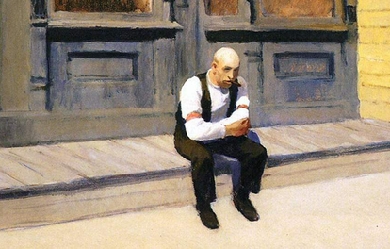
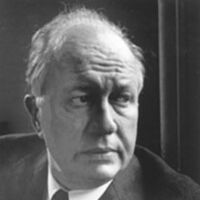
Theodore Roethke (ret-kee; May 25, 1908 – August 1, 1963) was an American poet, who published several volumes of poetry characterized by its rhythm, rhyming, and natural imagery. He was awarded the Pulitzer Prize for poetry in 1954 for his book, The Waking, and he won the annual National Book Award for Poetry twice, in 1959 for Words for the Wind and posthumously in 1965 for The Far Field. Roethke was born in Saginaw, Michigan and grew up on the west side of the Saginaw River. His father, Otto, was a German immigrant, a market-gardener who owned a large local 25 acre greenhouse, along with his brother (Theodore's uncle). Much of Theodore's childhood was spent in this greenhouse, as reflected by the use of natural images in his poetry. The poet's adolescent years were jarred, however, by his uncle's suicide and by the death of his father from cancer, both in early 1923, when Theodore (Ted) was only 15. These deaths shaped Roethke's psyche and creative life. He attended the University of Michigan, earning A.B. and M.A. degrees. He briefly attended law school before entering Harvard University, where he studied under the poet Robert Hillyer. Abandoning graduate study because of the Great Depression, he taught English at several universities, including Lafayette College, Pennsylvania State University, and Bennington College. In 1940, he was expelled from his position at Lafayette and he returned to Michigan. Just prior to his return, he had an affair with established poet and critic Louise Bogan, who later became one of his strongest early supporters. While teaching at Michigan State University in East Lansing, he began to suffer from manic depression, which fueled his poetic impetus. His last teaching position was at the University of Washington, leading to an association with the poets of the American Northwest. Some of his best known students included James Wright, Carolyn Kizer, Jack Gilbert, Richard Hugo, and David Wagoner. In 1953, Roethke married Beatrice O'Connell, a former student. Like many other American poets of his generation, Roethke was a heavy drinker and susceptible, as mentioned, to bouts of mental illness. He did not inform O'Connell of his repeated episodes of depression, yet she remained dedicated to him and his work. She ensured the posthumous publication of his final volume of poetry, The Far Field, which includes the poem "Meditation at Oyster River." In 1961, "The Return" was featured on George Abbe's album Anthology of Contemporary American Poetry on Folkways Records. The following year, Roethke released his own album on the label entitled, Words for the Wind: Poems of Theodore Roethke. He suffered a heart attack in his friend S. Rasnics' swimming pool in 1963 and died on Bainbridge Island, Washington, aged 55. The pool was later filled in and is now a zen rock garden, which can be viewed by the public at the Bloedel Reserve, a 150-acre (60 hectare) former private estate. There is no sign to indicate that the rock garden was the site of Roethke's death. There is a sign that commemorates his boyhood home and burial in Saginaw, Michigan. The historical marker notes in part: Theodore Roethke (1908–1963) wrote of his poetry: The greenhouse "is my symbol for the whole of life, a womb, a heaven-on-earth." Roethke drew inspiration from his childhood experiences of working in his family's Saginaw floral company. Beginning is 1941 with Open House, the distinguished poet and teacher published extensively, receiving a Pulitzer Prize for poetry and two National Book Awards among an array of honors. In 1959 Pennsylvania University awarded him the Bollingen Prize. Roethke taught at Michigan State College, (present-day Michigan State University) and at colleges in Pennsylvania and Vermont, before joining the faculty of the University of Washington at Seattle in 1947. Roethke died in Washington in 1963. His remains are interred in Saginaw's Oakwood Cemetery. The Friends of Theodore Roethke Foundation maintains his birthplace at 1805 Gratiot in Saginaw as a museum. In 1995, the Seattle alley between Seventh and Eighth Avenues N.E. running from N.E. 45th Street to N.E. 47th Street was named Roethke Mews in his honor. It adjoins the Blue Moon Tavern, one of Roethke's haunts. Critical responses The poet Stanley Kunitz said of Roethke, "The poet of my generation who meant most to me, in his person and in his art, was Theodore Roethke." The Poetry Foundation entry on Roethke notes early reviews of his work and Roethke's response to that early criticism: W. H. Auden called [Roethke's first book] Open House "completely successful." In another review of the book, Elizabeth Drew felt "his poems have a controlled grace of movement and his images the utmost precision; while in the expression of a kind of gnomic wisdom which is peculiar to him as he attains an austerity of contemplation and a pared, spare strictness of language very unusual in poets of today." Roethke kept both Auden's and Drew's reviews, along with other favorable reactions to his work. As he remained sensitive to how peers and others he respected should view his poetry, so too did he remain sensitive to his introspective drives as the source of his creativity. Understandably, critics picked up on the self as the predominant preoccupation in Roethke's poems. Roethke's breakthrough book, The Lost Son, also won him considerable praise. For instance, Michael Harrington felt "Roethke found his own voice and central themes in The Lost Son and Stanley Kunitz saw a "confirmation that he was in full possession of his art and of his vision." In Against Oblivion, an examination of forty-five twentieth century poets, the critic Ian Hamilton also praised this book, writing, "In Roethke's second book, The Lost Son, there are several of these greenhouse poems and they are among the best things he wrote; convincing and exact, and rich in loamy detail." In addition to the well-known greenhouse poems, the Poetry Foundation notes that Roethke also won praise "for his love poems which first appeared in The Waking and earned their own section in the new book [and] 'were a distinct departure from the painful excavations of the monologues and in some respects a return to the strict stanzaic forms of the earliest work,' [according to the poet] Stanley Kunitz. [The critic] Ralph Mills described 'the amatory verse' as a blend of 'consideration of self with qualities of eroticism and sensuality; but more important, the poems introduce and maintain a fascination with something beyond the self, that is, with the figure of the other, or the beloved woman.'" In reviewing his posthumously published Collected Poems in 1966, Karl Malkoff of The Sewanee Review wrote: Bibliography * Open House (1941) * The Lost Son and Other Poems (1948) * Praise to the End! (1951) * The Waking (1953) * Words For The Wind (1958) * I Am! Says The Lamb (1961) * Party at the Zoo" (1963) (A Modern Masters Book for Children, illustrated by Al Swiller) * The Far Field (1964) * Dirty Dinky and Other Creatures: Poems for Children (1973) * On Poetry and Craft: Selected Prose and Craft of Theodore Roethke (Copper Canyon Press, 2001) * Straw for the Fire: From the Notebooks of Theodore Roethke, 1943-63 (1972; Copper Canyon * Press, 2006) (selected and arranged by David Wagoner) References Wikipedia - http://en.wikipedia.org/wiki/Theodore_Roethke

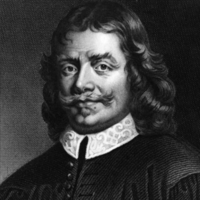
John Bunyan (/ˈbʌnjən/; baptised 30 November 1628– 31 August 1688) was an English writer and Baptist preacher best remembered as the author of the Christian allegory The Pilgrim’s Progress. In addition to The Pilgrim’s Progress, Bunyan wrote nearly sixty titles, many of them expanded sermons. Bunyan came from the village of Elstow, near Bedford. He had some schooling and at the age of sixteen joined the Parliamentary army during the first stage of the English Civil War. After three years in the army he returned to Elstow and took up the trade of tinker, which he had learned from his father. He became interested in religion after his marriage, attending first the parish church and then joining the Bedford Meeting, a nonconformist group in Bedford, and becoming a preacher. After the restoration of the monarch, when the freedom of nonconformists was curtailed, Bunyan was arrested and spent the next twelve years in jail as he refused to undertake to give up preaching. During this time he wrote a spiritual autobiography, Grace Abounding to the Chief of Sinners, and began work on his most famous book, The Pilgrim’s Progress, which was not published until some years after his release. Bunyan’s later years, in spite of another shorter term of imprisonment, were spent in relative comfort as a popular author and preacher, and pastor of the Bedford Meeting. He died aged 59 after falling ill on a journey to London and is buried in Bunhill Fields. The Pilgrim’s Progress became one of the most published books in the English language; 1,300 editions having been printed by 1938, 250 years after the author’s death. He is remembered in the Church of England with a Lesser Festival on 30 August, and on the liturgical calendar of the United States Episcopal Church on 29 August. Some other churches of the Anglican Communion, such as the Anglican Church of Australia, honour him on the day of his death (31 August). Early life John Bunyan was born in 1628 to Thomas and Margaret Bunyan at Bunyan’s End in the parish of Elstow, Bedfordshire. Bunyan’s End is located about half-way between the hamlet of Harrowden (one mile south-east of Bedford) and Elstow High Street. Bunyan’s date of birth is not known, but he was baptised on 30 November 1628, the baptismal entry in the parish register reading "John the sonne of Thomas Bunnion Jun., the 30 November". The name Bunyan was spelt in many different ways (there are 34 variants in Bedfordshire Record Office) and had its origins in the Norman-French name Buignon. There had been Bunyans in north Bedfordshire since at least 1199. Bunyan’s father was a brazier or tinker who travelled around the area mending pots and pans, and his grandfather had been a chapman or small trader. The Bunyans also owned land in Elstow, so Bunyan’s origins were not quite as humble as he suggested in his autobiographical work Grace Abounding to the Chief of Sinners when he wrote that his father’s house was “of that rank that is meanest and most despised in the country”. As a child Bunyan learnt his father’s trade of tinker and was given some rudimentary schooling. In Grace Abounding Bunyan recorded few details of his upbringing, but he did note how he picked up the habit of swearing (from his father), suffered from nightmares, and read the popular stories of the day in cheap chap-books. In the summer of 1644 Bunyan lost both his mother and his sister Margaret. That autumn, shortly before or after his sixteenth birthday, Bunyan enlisted in the Parliamentary army when an edict demanded 225 recruits from the town of Bedford. There are few details available about his military service, which took place during the first stage of the English Civil War. A muster roll for the garrison of Newport Pagnell shows him as private “John Bunnian”. In Grace Abounding, he recounted an incident from this time, as evidence of the grace of God: “When I was a Soldier I, with others were drawn out to go to such a place to besiege it; But when I was just ready to go, one of the company desired to go in my room, to which, when I had consented, he took my place; and coming to the siege, as he stood Sentinel, he was shot into the head with a Musket bullet and died.” Bunyan’s army service provided him with a knowledge of military language which he then used in his book The Holy War, and also exposed him to the ideas of the various religious sects and radical groups he came across in Newport Pagnell. The garrison town also gave him opportunities to indulge in the sort of behaviour he would later confess to in Grace Abounding: “So that until I came to the state of Marriage, I was the very ringleader of all the Youth that kept me company, in all manner of vice and ungodliness”. Bunyan spent nearly three years in the army, leaving in 1647 to return to Elstow and his trade as a tinker. His father had remarried and had more children and Bunyan moved from Bunyan’s End to a cottage in Elstow High Street. Marriage and conversion Within two years of leaving the army, Bunyan married. The name of his wife and the exact date of his marriage are not known, but Bunyan did recall that his wife, a pious young woman, brought with her into the marriage two books that she had inherited from her father: Arthur Dent’s Plain Man’s Pathway to Heaven and Lewis Bayly’s Practice of Piety. He also recalled that, apart from these two books, the newly-weds possessed little: “not having so much household-stuff as a Dish or a Spoon betwixt us both”. The couple’s first daughter, Mary, was born in 1650, and it soon became apparent that she was blind. They would have three more children, Elizabeth, Thomas and John. By his own account, Bunyan had as a youth enjoyed bell-ringing, dancing and playing games including on Sunday, thought by many to be the Sabbath, which was forbidden by the Puritan regime. One Sunday the vicar of Elstow preached a sermon against Sabbath breaking, and Bunyan took this sermon to heart. That afternoon, as he was playing tip-cat (a game in which a small piece of wood is hit with a bat) on Elstow village green, he heard a voice from the heavens “Wilt thou leave thy sins, and go to Heaven? Or have thy sins, and go to Hell?” The next few years were a time of intense spiritual conflict for Bunyan as he struggled with his doubts and fears over religion and guilt over what he saw as his state of sin. During this time Bunyan, whilst on his travels as a tinker, happened to be in Bedford and pass a group of women who were talking about spiritual matters on their doorstep. The women were in fact some of the founding members of the Bedford Free Church or Meeting and Bunyan, who had been attending the parish church of Elstow, was so impressed by their talk that he joined their church. At that time the nonconformist group was meeting in St John’s church in Bedford under the leadership of former Royalist army officer John Gifford. At the instigation of other members of the congregation Bunyan began to preach, both in the church and to groups of people in the surrounding countryside. In 1656, having by this time moved his family to St Cuthbert’s Street in Bedford, he published his first book, Gospel Truths Opened, which was inspired by a dispute with Quakers. In 1658 Bunyan’s wife died, leaving him with four small children, one of them blind. A year later he married an eighteen-year-old woman called Elizabeth. Imprisonment The religious tolerance which had allowed Bunyan the freedom to preach became curtailed with the restoration of the monarchy in 1660. The members of the Bedford Meeting were no longer able to meet in St John’s church, which they had been sharing with the Anglican congregation. That November, Bunyan was preaching at Lower Samsell, a farm near the village of Westoning, thirteen miles from Bedford, when he was warned that a warrant was out for his arrest. Deciding not to make an escape, he was arrested and brought before the local magistrate Sir Francis Wingate, at Harlington House. The Act of Uniformity, which made it compulsory for preachers to be ordained by an Anglican bishop and for the revised Book of Common Prayer to be used in church services, was still two years away, and the Act of Conventicles, which made it illegal to hold religious meetings of five or more people outside the Church of England was not passed until 1664. Bunyan was arrested under the Conventicle Act of 1593, which made it an offence to attend a religious gathering other than at the parish church with more than five people outside their family. The offence was punishable by 3 months imprisonment followed by banishment or execution if the person then failed to promise not to re-offend. The Act had been little used, and Bunyan’s arrest was probably due in part to concerns that non-conformist religious meetings were being held as a cover for people plotting against the king (although this was not the case with Bunyan’s meetings). The trial of Bunyan took place in January 1661 at the quarter sessions in Bedford, before a group of magistrates under John Kelynge, who would later help to draw up the Act of Uniformity. Bunyan, who had been held in prison since his arrest, was indicted of having “devilishly and perniciousy abstained from coming to church to hear divine service” and having held “several unlawful meetings and conventicles, to the great disturbance and distraction of the good subjects of this kingdom”. He was sentenced to three months imprisonment with transportation to follow if at the end of this time he didn’t agree to attend the parish church and desist from preaching. As Bunyan refused to agree to give up preaching, his period of imprisonment eventually extended to 12 years and brought great hardship to his family. Elizabeth, who made strenuous attempts to obtain his release, had been pregnant when her husband was arrested and she subsequently gave birth prematurely to a still-born child. Left to bring up four step-children, one of whom was blind, she had to rely on the charity of Bunyan’s fellow members of the Bedford Meeting and other supporters and on what little her husband could earn in gaol by making shoelaces. But Bunyan remained resolute: “O I saw in this condition I was a man who was pulling down his house upon the head of his Wife and Children; yet thought I, I must do it, I must do it”. Bunyan spent his 12 years’ imprisonment in Bedford County Gaol, which stood on the corner of the High Street and Silver Street. There were however occasions when he was allowed out of prison, depending on the gaolers and the mood of the authorities at the time, and he was able to attend the Bedford Meeting and even preach. His daughter Sarah was born during his imprisonment (the other child of his second marriage, Joseph, was born after his release in 1672). In prison, Bunyan had a copy of the Bible and of John Foxe’s Book of Martyrs, as well as writing materials. He also had at times the company of other preachers who had been imprisoned. It was in Bedford Gaol that he wrote Grace Abounding and started work on The Pilgrim’s Progress, as well as penning several tracts that may have brought him a little money. In 1671, while still in prison, he was chosen as pastor of the Bedford Meeting. By that time there was a mood of increasing religious toleration in the country and in March 1672 the king issued a declaration of indulgence which suspended penal laws against nonconformists. Thousands of nonconformists were released from prison, amongst them Bunyan and five of his fellow inmates of Bedford Gaol. Bunyan was freed in May 1672 and immediately obtained a licence to preach under the declaration of indulgence. Later life Following his release from gaol in 1672 Bunyan probably did not return to his former occupation of tinker. Instead he devoted his time to writing and preaching. He continued as pastor of the Bedford Meeting and travelled over Bedfordshire and adjoining counties on horseback to preach, becoming known affectionately as “Bishop Bunyan”. His preaching also took him to London, where Lord Mayor Sir John Shorter became a friend and presented him with a silver-mounted walking stick. The Pilgrim’s Progress was published in 1678 by Nathaniel Ponder and immediately became popular, though probably making more money for its publisher than for its author. Two events marred Bunyan’s life during the later 1670s. Firstly he became embroiled in a scandal concerning a young woman called Agnes Beaumont. When going to preach in Gamlingay in 1674 he allowed Beaumont, a member of the Bedford Meeting, to ride pillion on his horse, much to the anger of her father, who then died suddenly. His daughter was initially suspected of poisoning him, though the coroner found he had died of natural causes. And then in 1676-7 he underwent a second term of imprisonment, probably for refusing to attend the parish church. In 1688, on his way to London, Bunyan made a detour to Reading, Berkshire, to try and resolve a quarrel between a father and son. Continuing to London to the house of his friend, grocer John Strudwick of Snow Hill in the City of London, he was caught in a storm and fell ill with a fever. He died in Strudwick’s house on the morning of 31 August 1688 and was buried in the tomb belonging to Strudwick in Bunhill Fields nonconformist burial ground in London. Bunyan’s estate at his death was worth £42 19s 0d. His widow Elizabeth died in 1691. Works * Between 1656 when he published his first work, Some Gospel Truths Opened (a tract against the Quakers), and his death in 1688, Bunyan published 42 titles. A further two works, including his Last Sermon, were published the following year by George Larkin. In 1692 Southwark comb-maker Charles Doe, who was a friend of Bunyan’s later years, brought out, with the collaboration of Bunyan’s widow, a collection of the author’s works, including 12 previously unpublished titles, mostly sermons. Six years later Doe published The Heavenly Footman and finally in 1765 Relation of My Imprisonment was published, giving a total of 58 published titles. * It is the allegory The Pilgrim’s Progress, written during Bunyan’s twelve-year imprisonment although not published until 1678 six years after his release, that made Bunyan’s name as an author with its immediate success. It remains the book for which Bunyan is best remembered. The images Bunyan uses in The Pilgrim’s Progress are reflections of images from his own world; the strait gate is a version of the wicket gate at Elstow Abbey church, the Slough of Despond is a reflection of Squitch Fen, a wet and mossy area near his cottage in Harrowden, the Delectable Mountains are an image of the Chiltern Hills surrounding Bedfordshire. Even his characters, like the Evangelist as influenced by John Gifford, are reflections of real people. Further allegorical works were to follow: The Life and Death of Mr. Badman (1680), Pilgrim’s Progress Part II, and The Holy War (1682). Grace Abounding to the Chief of Sinners, a spiritual autobiography was published in 1666, when he was still in jail. Adaptations * In March, 2015 Director Darren Wilson announced a Kickstarter campaign to produce a full-length feature film based on The Pilgrims Progress called Heaven Quest: A Pilgrim’s Progress Movie. Memorials * In 1862 a recumbent statue was created to adorn Bunyan’s grave, and restored in 1922. * In 1874, a bronze statue of John Bunyan, sculpted by Sir Joseph Edgar Boehm, was erected in Bedford. This stands at the south-western corner of St Peter’s Green, facing down Bedford’s High Street. The site was chosen by Boehm for its significance as a crossroads. Bunyan is depicted expounding the Bible, to an invisible congregation, with a broken fetter representing his imprisonment by his left foot. There are three scenes from “The Pilgrim’s Progress” on the stone plinth: Christian at the wicket gate; his fight with Apollyon; and losing his burden at the foot of the cross of Jesus. The statue was unveiled by Lady Augusta Stanley, wife of the Dean of Westminster, on Wednesday 10 June 1874. In 1876 the Duke of Bedford gave bronze doors by Frederick Thrupp depicting scenes from The Pilgrim’s Progress to the Bunyan Meeting (the former Bedford Meeting which had been renamed in Bunyan’s honour). * There is another statue of him in Kingsway, London, and there are memorial windows in Westminster Abbey, Southwark Cathedral and various churches, including Elstow Abbey (the parish church of Elstow) and the Bunyan Meeting Free Church in Bedford. * Bunyan is remembered in the Church of England with a Lesser Festival on 30 August, and on the liturgical calendar of the United States Episcopal Church on 29 August. Some other churches of the Anglican Communion, such as the Anglican Church of Australia, honour him on the day of his death (31 August). Legacy * Bunyan is best remembered for The Pilgrim’s Progress, a book which gained immediate popularity. By 1692, four year’s after the author’s death, publisher Charles Doe estimated that 100,000 copies had been printed in England, as well as editions “in France, Holland, New England and Welch”. By 1938, 250 years after Bunyan’s death, more than 1,300 editions of the book had been printed. * During the 18th century Bunyan’s unpolished style fell out of favour, but his popularity returned with Romanticism, poet Robert Southey writing an appreciative biography in 1830. Bunyan’s reputation was further enhanced by the evangelical revival and he became a favourite author of the Victorians. The tercentenary of Bunyan’s birth, celebrated in 1928, elicited praise from his former adversary, the Church of England. Although popular interest in Bunyan waned during the second half of the twentieth century, academic interest in the writer has increased and Oxford University Press brought out a new edition of his works, beginning in 1976. Authors who have been influenced by Bunyan include Nathaniel Hawthorne, Herman Melville, Charles Dickens, Louisa May Alcott and George Bernard Shaw. * Bunyan’s work, in particular The Pilgrim’s Progress, has reached a wider audience through stage productions, film, TV, and radio. An opera by Ralph Vaughan Williams based on The Pilgrim’s Progress was first performed at the Royal Opera House in 1951 as part of the Festival of Britain and revived in 2012 by the English National Opera. * John Bunyan had six children, five of whom are known to have married, of which four had children. Moot Hall Museum (in Elstow) has a record of John’s descendants, down to the nineteenth century but as of September 2013, no verifiable trace of later descendants has been found. Selected bibliography * * Among Bunyan’s many works: References Wikipedia—https://en.wikipedia.org/wiki/John_Bunyan

Hey! I went through a stage where poetry was an everyday thing for me and I thought I may as well share it instead of filling my book with it.... I don't write as often anymore but would love to start it up again and need some inspiration. I'm a fantasy writer, those of you who have read my poetry so far may notice a lot of it is more horror wirting then nice poetry.. I was in a dark place when I started writing and it helped to express my feelings on paper instead of taking it out on others and dragging myself down, it helped me get through that tough time and back onto my feet so I really do LOVE poetry :) Majority of my poetry is made up, for example, I have never been to the snow.... But I enjoy the fantasy of it of writing whatever you like. The rest of my poems though, are real and based on real life events and I will more than likely note that on my poems. Thank you for taking the time to read this through, enjoy my poetry and feedback is appreciated! :) Cheeers mate!
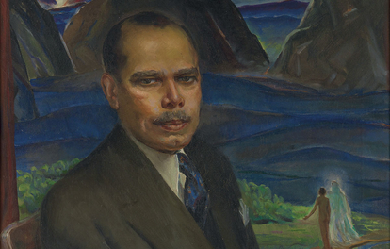
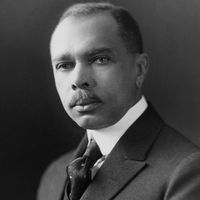
James Weldon Johnson (June 17, 1871– June 26, 1938) was an American author, educator, lawyer, diplomat, songwriter, and civil rights activist. Johnson is best remembered for his leadership of the National Association for the Advancement of Colored People (NAACP), where he started working in 1917. In 1920 he was the first African American to be chosen as executive secretary of the organization, effectively the operating officer. He served in that position from 1920 to 1930. Johnson established his reputation as a writer, and was known during the Harlem Renaissance for his poems, novels, and anthologies collecting both poems and spirituals of black culture. He was appointed under President Theodore Roosevelt as US consul in Venezuela and Nicaragua for most of the period from 1906 to 1913. In 1934 he was the first African-American professor to be hired at New York University. Later in life he was a professor of creative literature and writing at Fisk University.
.jpg)
45 year;s old.... mother of 5 grandmother to 3 and counting. married 22 years. Lives on a little mountain in NH. I write from my heart.. And my heart can't lie.. It can't hide and God willing will never Die...Even after i am someday laid to rest.. my children and their children will have a story to tell.. one that Grandma weaved....And was anxious to tell.

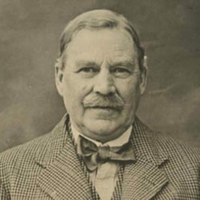
William Henry Ogilvie (21 August 1869– 30 January 1963) was a Scottish-Australian narrative poet and horseman. He was born near Kelso, Borders, Scotland and arrived in Australia in 1889, returning to Scotland after a decade. He had a deep love of horses and riding and he became interested in the outback. Before long he became an expert station hand, drover and horse breaker, working on such stations as Belalie on the Warrego, and Maaoupe near Penola in South Australia. He was a friend of Harry “Breaker” Morant and was described as a quiet-spoken Scot of medium height, with a fair moustache and red complexion.
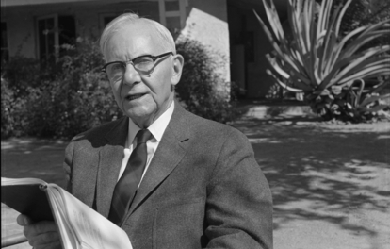
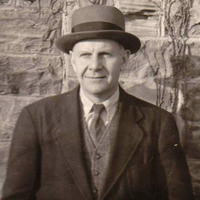
John Crowe Ransom (April 30, 1888– July 3, 1974) was an American educator, scholar, literary critic, poet, essayist and editor. He is considered to be a founder of the New Criticism school of literary criticism. As a faculty member at Kenyon College, he was the first editor of the widely regarded Kenyon Review. Highly respected as a teacher and mentor to a generation of accomplished students, he also was a prize-winning poet and essayist.


Edwin George Morgan (27 April 1920 – 17 August 2010) was a Scottish poet and translator who was associated with the Scottish Renaissance. He is widely recognised as one of the foremost Scottish poets of the 20th century. In 1999, Morgan was made the first Glasgow Poet Laureate. In 2004 he was named as the first Scottish national poet: The Scots Makar. Morgan was born in Glasgow and grew up in Rutherglen. His parents were Presbyterian. As a child he was not surrounded by books, nor did he have any literary acquaintances. Schoolmates labelled him a swot. He convinced his parents to finance his membership of several book clubs in Glasgow. The Faber Book of Modern Verse (1936) was a “revelation” to him, he later said.
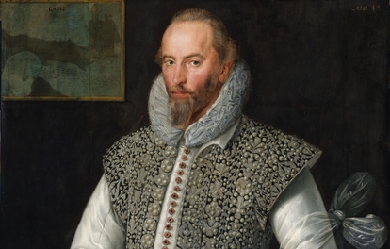

Sir Walter Ralegh (or Raleigh), British explorer, poet and historian, was born probably in 1552, though the date is not quite certain. His father, Walter Ralegh of Fardell, in the parish of Cornwood, near Plymouth, was a country gentleman of old family, but of reduced estate. Walter Ralegh the elder was three times married. His famous son was the child of his third marriage with Catherine, daughter of Sir Philip Champernown of Modbury, and widow of Otho Gilbert of Compton. By her first marriage she had three sons, John, Humphrey and Adrian Gilbert.

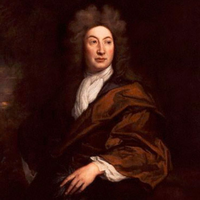
John Dryden (19 August 1631– 12 May 1700) was an English poet, literary critic, translator, and playwright who was made Poet Laureate in 1668. He is seen as dominating the literary life of Restoration England to such a point that the period came to be known in literary circles as the Age of Dryden. Walter Scott called him “Glorious John.”


Harriet Monroe (December 23, 1860– September 26, 1936) was an American editor, scholar, literary critic, poet and patron of the arts. She is best known as the founding publisher and long-time editor of Poetry magazine, which made its debut in 1912. As a supporter of the poets Wallace Stevens, Ezra Pound, H. D., T. S. Eliot, William Carlos Williams, Carl Sandburg, Max Michelson and others, she played an important role in the development of modern poetry. Because she was a longtime correspondent of the poets she supported, her letters provide a wealth of information on their thoughts and motives. Monroe was born in Chicago, Illinois. She read at an early age; her father had a large library that provided refuge from domestic discord. In her autobiography, A Poet’s Life: Seventy Years in a Changing World, published two years after her death, Monroe recalls: “I started in early with Shakespeare, Byron, Shelley, with Dickens and Thackeray; and always the book-lined library gave me a friendly assurance of companionship with lively and interesting people, gave me friends of the spirit to ease my loneliness.”

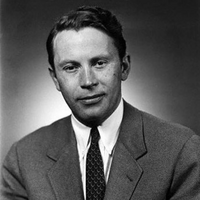
Richard Purdy Wilbur (born March 1, 1921) is an American poet and literary translator. He was appointed the second Poet Laureate Consultant in Poetry to the Library of Congress in 1987, and twice received the Pulitzer Prize for Poetry, in 1957 and again in 1989. Biography Early years Wilbur was born in New York City March 1, 1921 and grew up in North Caldwell, New Jersey. He graduated from Montclair High School in 1938, having worked on the school newspaper as a student there. He graduated from Amherst College in 1942 and then served in the United States Army from 1943 to 1945 during World War II. After the Army and graduate school at Harvard University, Wilbur taught at Wellesley College, then Wesleyan University for two decades and at Smith College for another decade. At Wesleyan, he was instrumental in founding the award-winning poetry series of the University Press. He received two Pulitzer Prizes for Poetry and, as of 2009, teaches at Amherst College. He is also on the editorial board of the literary magazine The Common, based at Amherst College. Career When only 8 years old, Wilbur published his first poem in John Martin’s Magazine. His first book, The Beautiful Changes and Other Poems, appeared in 1947. Since then he has published several volumes of poetry, including New and Collected Poems (Faber, 1989). Wilbur is also a translator, specializing in the 17th century French comedies of Molière and the dramas of Jean Racine. His translation of Tartuffe has become the standard English version of the play, and has been presented on television twice (a 1978 production is available on DVD.) In addition to publishing poetry and translations, he has also published several children’s books including Opposites, More Opposites, and The Disappearing Alphabet. Continuing the tradition of Robert Frost and W. H. Auden, Wilbur’s poetry finds illumination in everyday experiences. Less well-known is Wilbur’s foray into lyric writing. He provided lyrics to several songs in Leonard Bernstein’s 1956 musical, Candide, including the famous “Glitter and Be Gay” and “Make Our Garden Grow.” He has also produced several unpublished works including “The Wing” and “To Beatrice”. His honors include the 1983 Drama Desk Special Award and the PEN Translation Prize for his translation of The Misanthrope, both the Pulitzer Prize for Poetry and the National Book Award for Things of This World (1956), the Edna St Vincent Millay award, the Bollingen Prize, and the Chevalier, Ordre des Palmes Académiques. He was elected a Fellow of the American Academy of Arts and Sciences in 1959. In 1987 Wilbur became the second poet, after Robert Penn Warren, to be named U.S. Poet Laureate after the position’s title was changed from Poetry Consultant. In 1988, he won the Aiken Taylor Award for Modern American Poetry and then in 1989 he won a second Pulitzer, this one for his New and Collected Poems. On October 14, 1994, he received the National Medal of Arts from President Bill Clinton. He also received the PEN/Ralph Manheim Medal for Translation in 1994. In 2003, Wilbur was inducted into the American Theater Hall of Fame. In 2006, Wilbur won the Ruth Lilly Poetry Prize. In 2010 he won the National Translation Award for the translation of The Theatre of Illusion by Pierre Corneille. In 2012, Yale conferred an honorary degree, Doctor of Letters, on Wilbur. Bibliography Poetry collections * 1947: The Beautiful Changes, and Other Poems * 1950: Ceremony, and Other Poems * 1955: A Bestiary * 1956: Things of This World - won Pulitzer Prize for Poetry and National Book Award, both in 1957 * 1961: Advice to a Prophet, and Other Poems * 1969: Walking to Sleep: New Poems and Translations * 1976: The Mind-Reader: New Poems * 1988: New and Collected Poems - won Pulitzer Prize for Poetry in 1989 * 2000: Mayflies: New Poems and Translations * 2004: Collected Poems, 1943–2004 * 2010: Anterooms * 2012: The Nutcracker Selected poems available online Prose collections * 1976: Responses: Prose Pieces, 1953–1976 * 1997: The Catbird’s Song: Prose Pieces, 1963–1995 Translated plays from other authors Translated from Molière * The Misanthrope (1955/1666) * Tartuffe (1963/1669) * The School for Wives (1971/1662) * The Learned Ladies (1978/1672) * School for Husbands (1992/1661) * The Imaginary Cuckold, or Sganarelle (1993/1660) * Amphitryon (1995/1668) * The Bungler (2000/1655) * Don Juan (2001/1665) * Lovers’ Quarrels (2009/1656) From Jean Racine * Andromache (1982/1667) * Phaedra (1986/1677) * The Suitors (2001/1668) From Pierre Corneille * The Theatre of Illusion (2007/1636) * Le Cid (2009/1636) * The Liar (2009/1643) Sources * President and first Lady honor Artists and Scholars, Clinton, The White House– Office of the Press Secretary, 1994-10-13 . References Wikipedia—https://en.wikipedia.org/wiki/Richard_Wilbur


